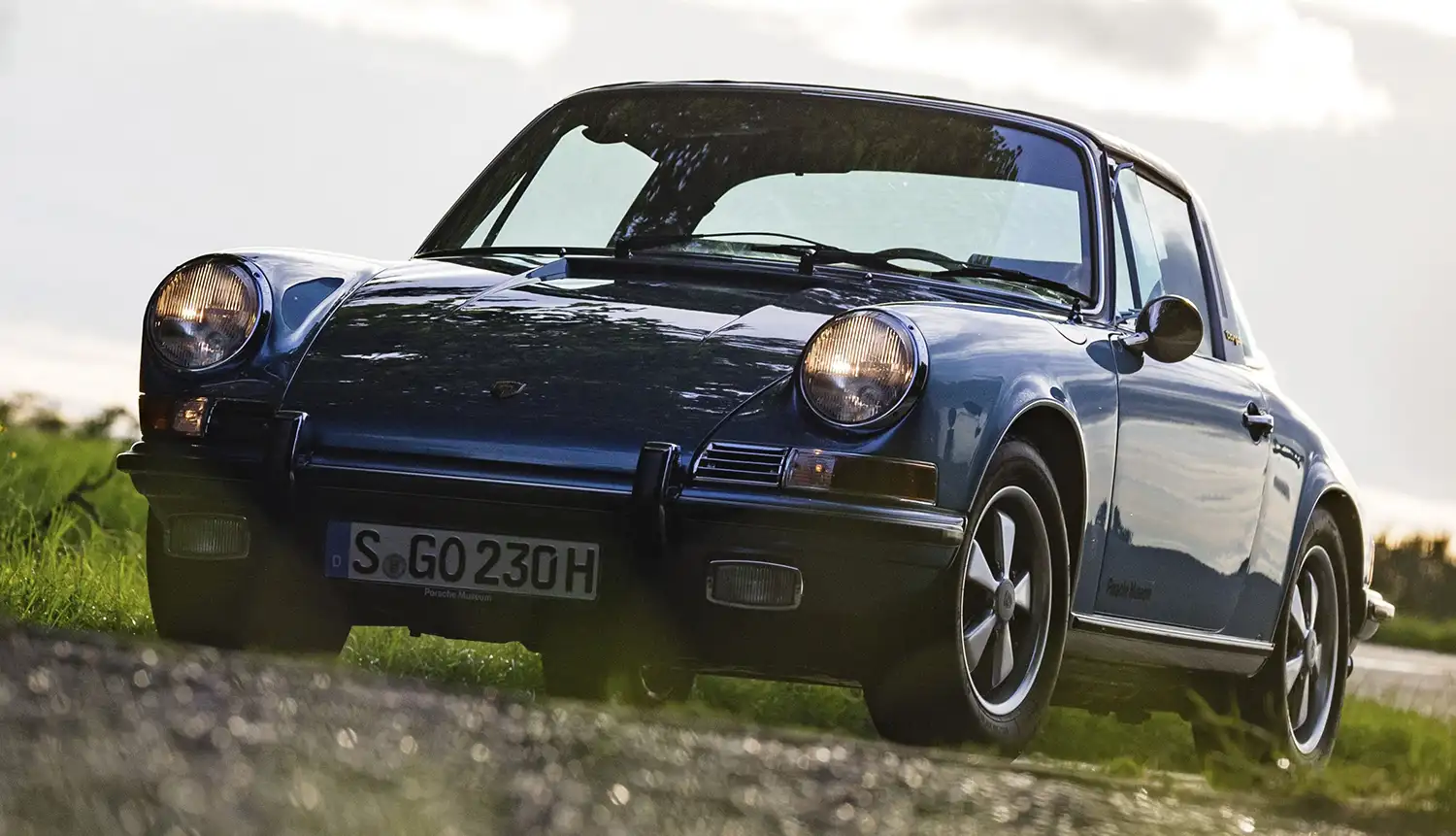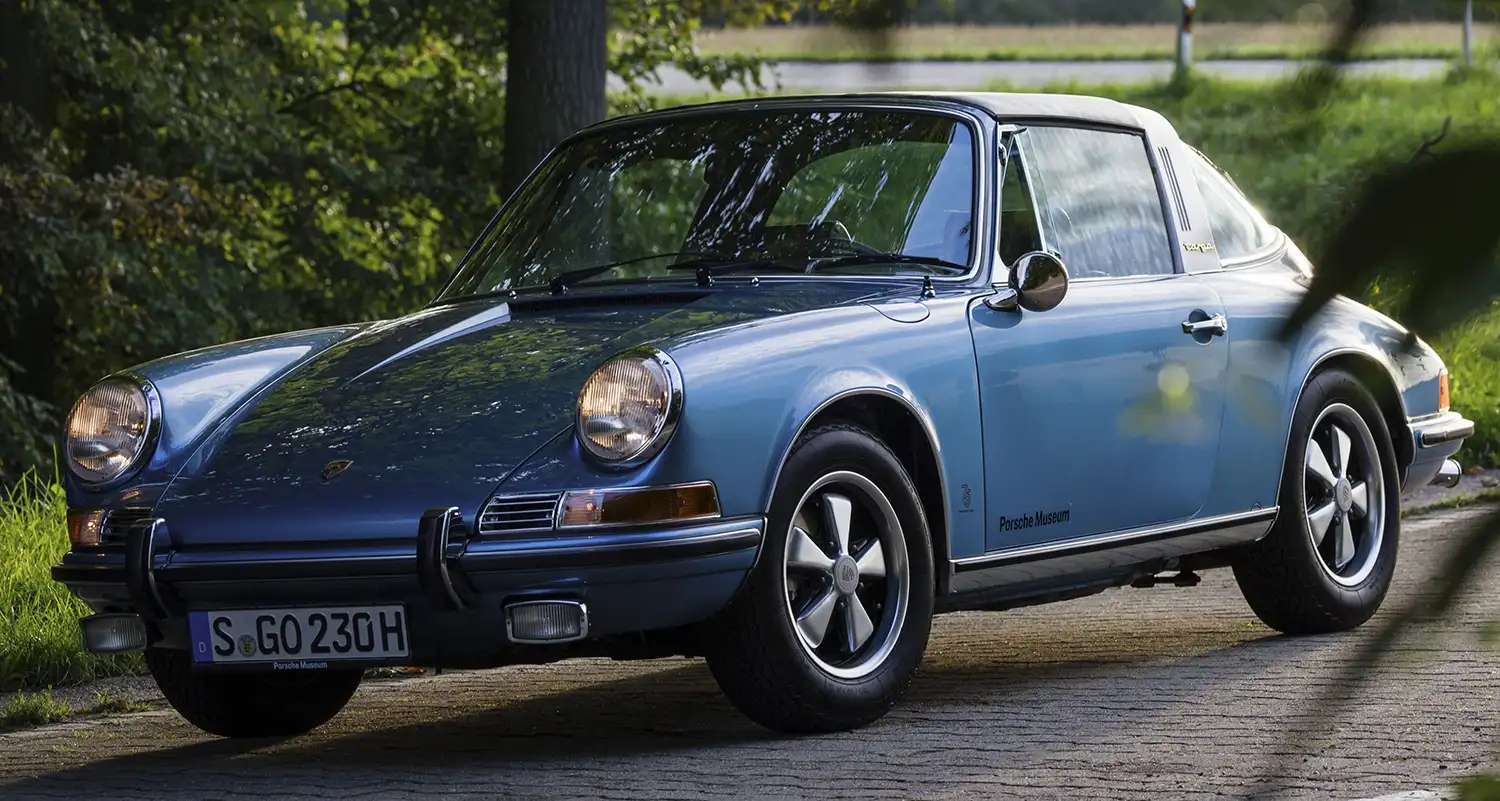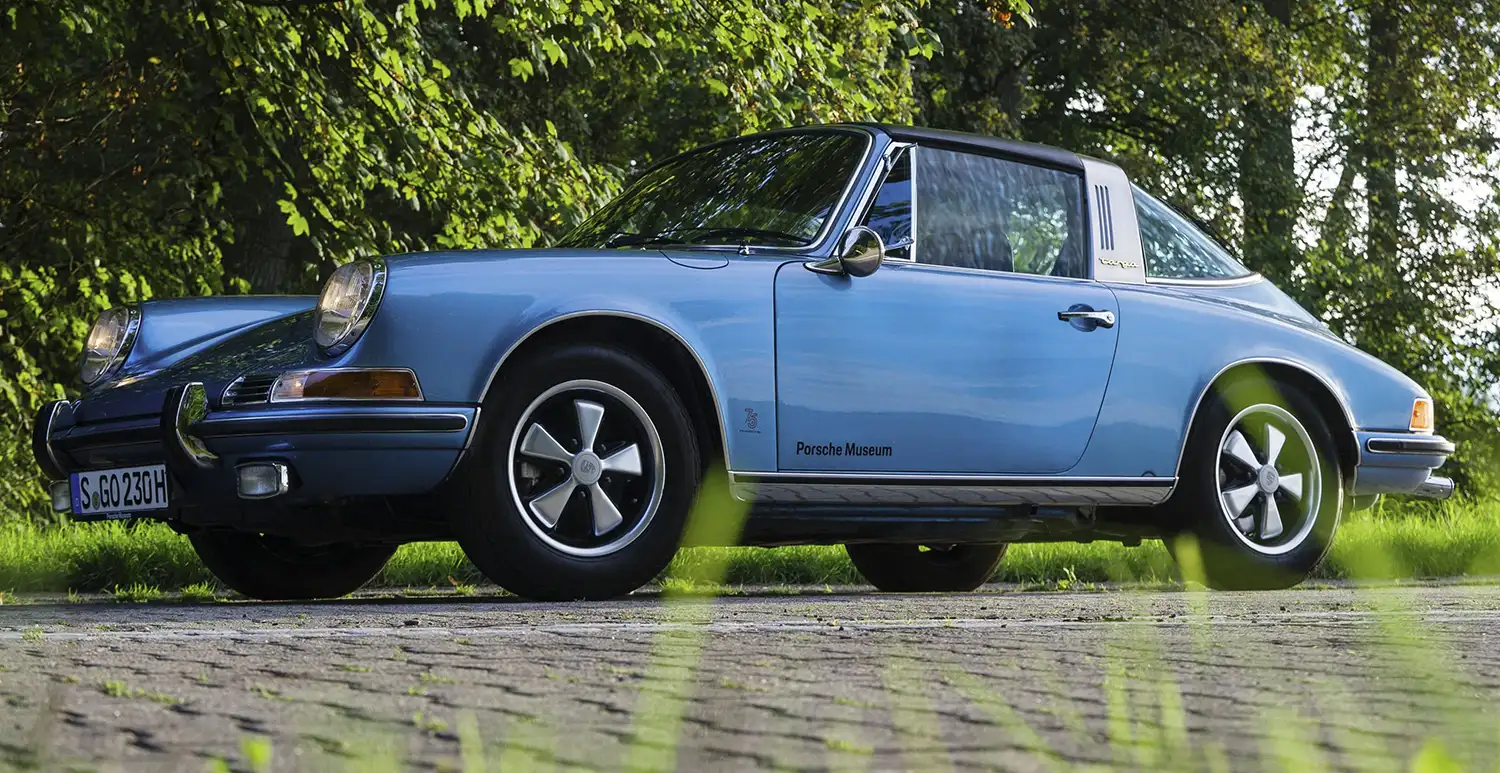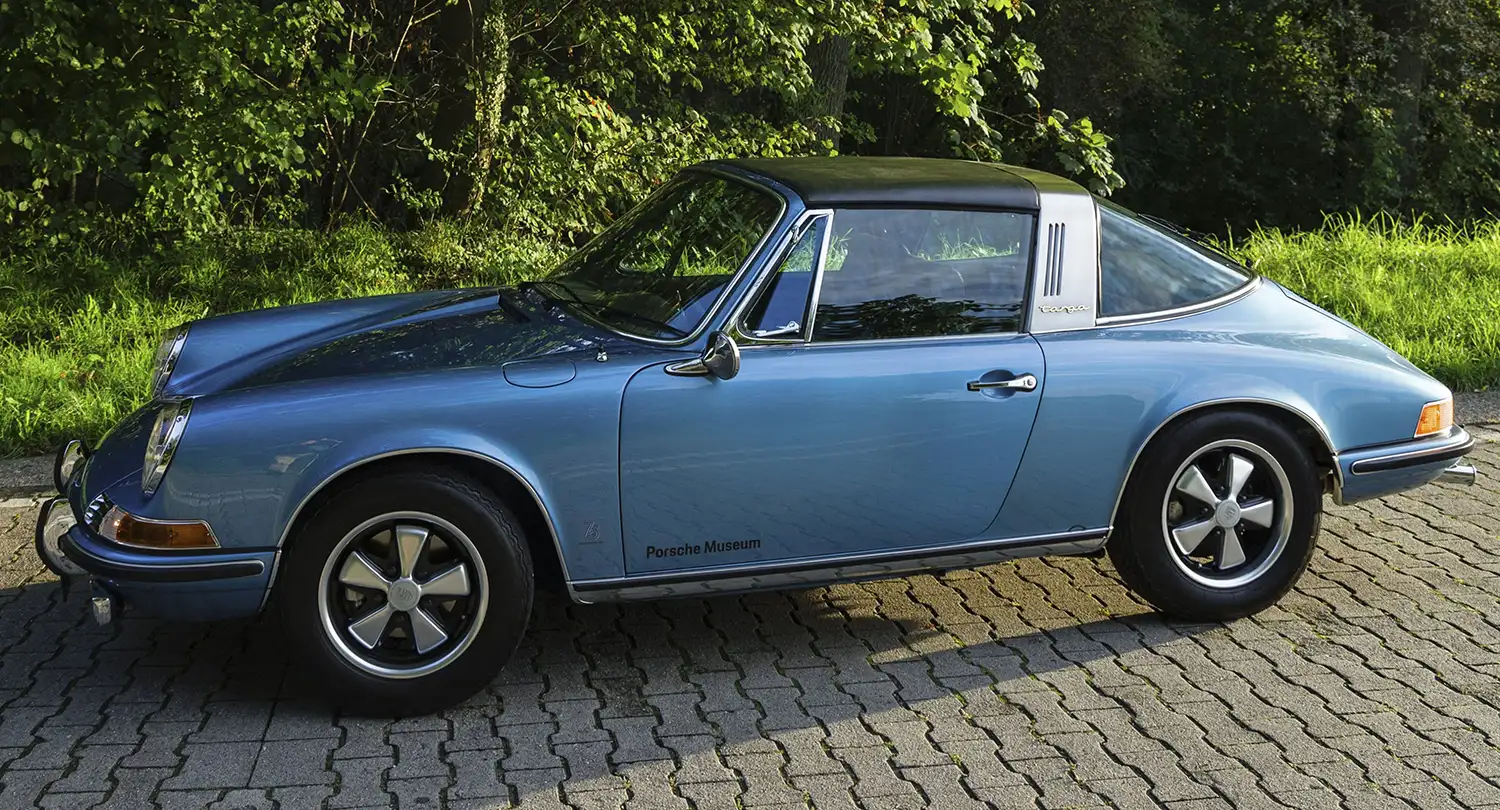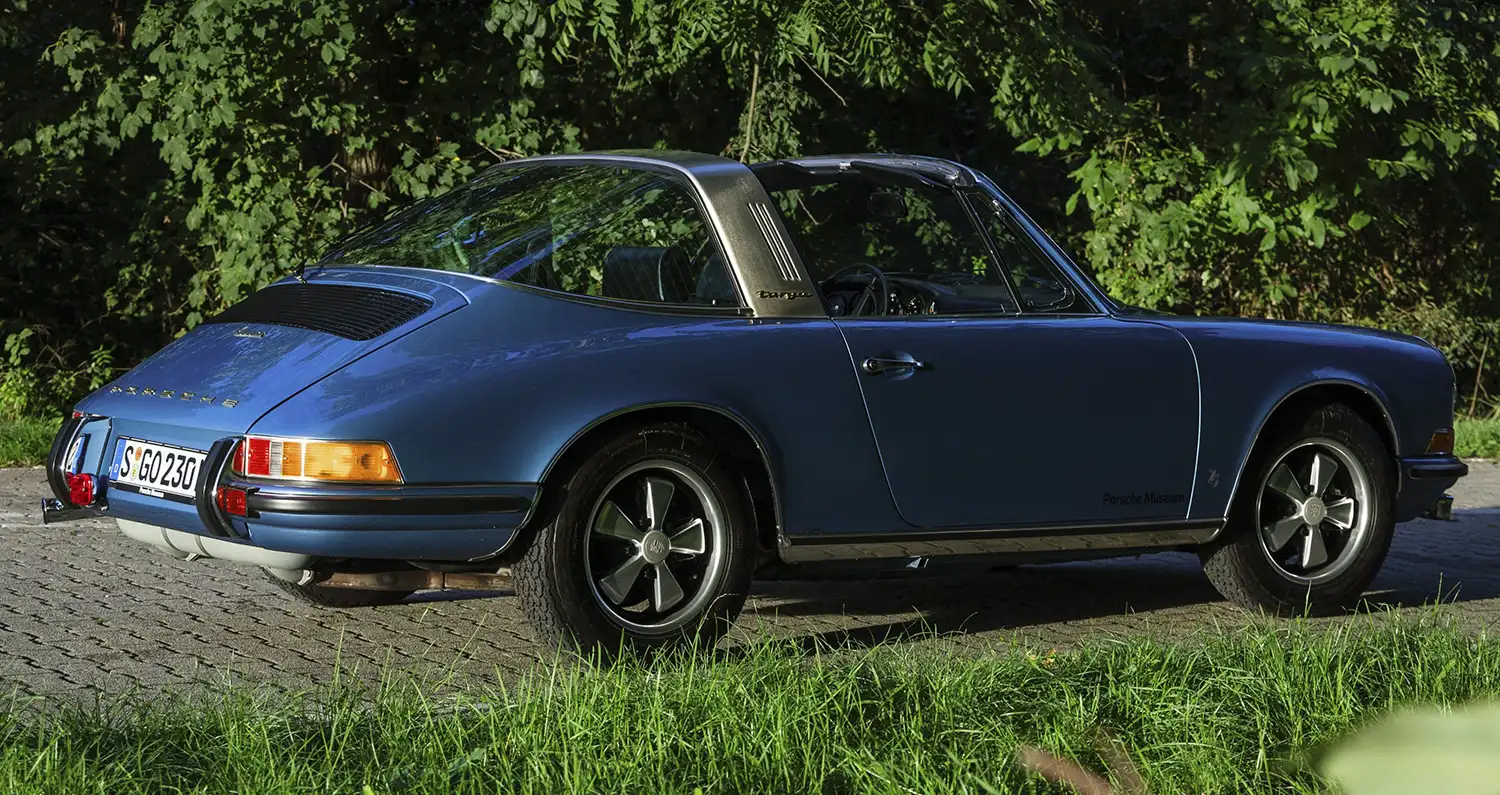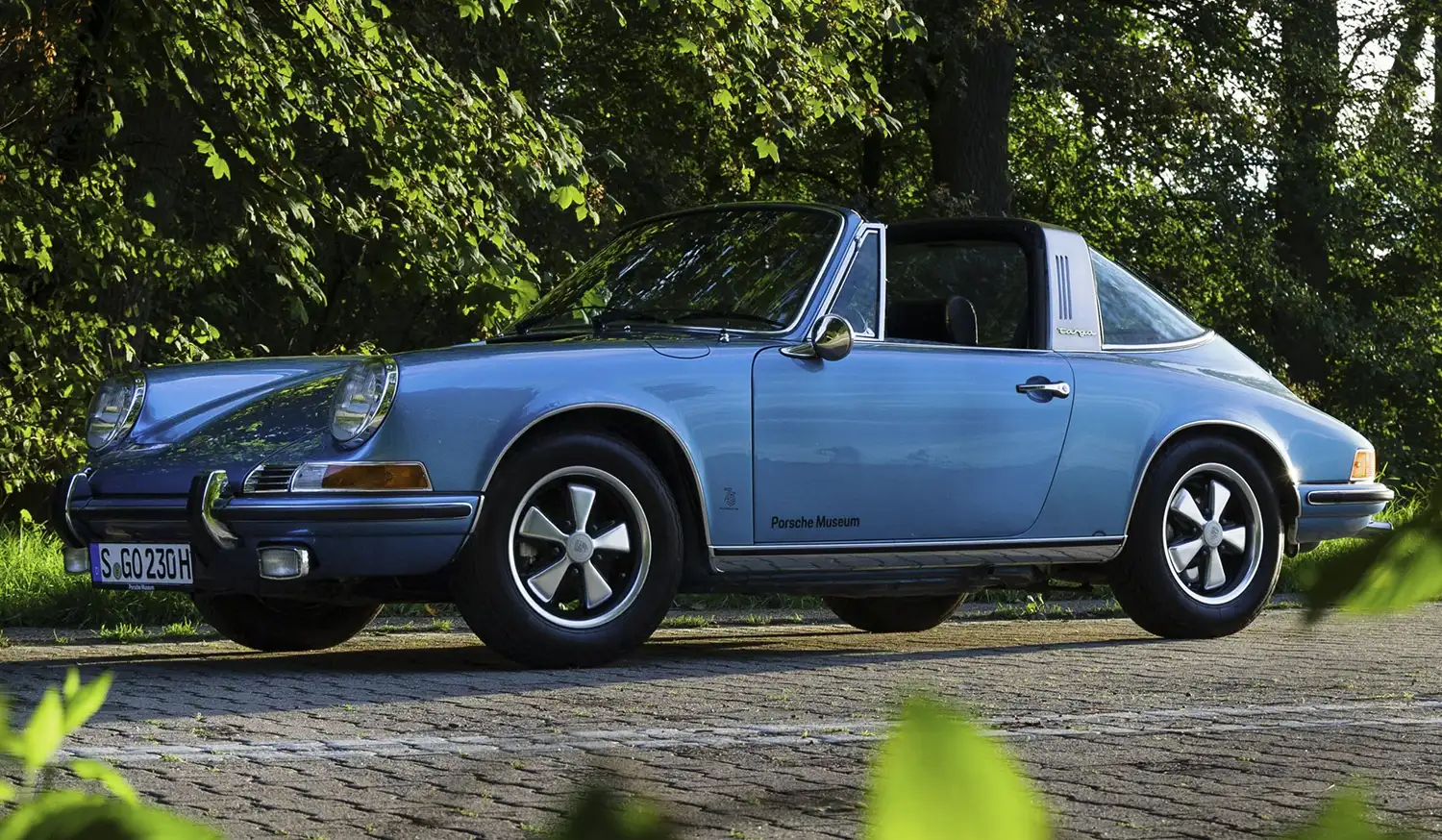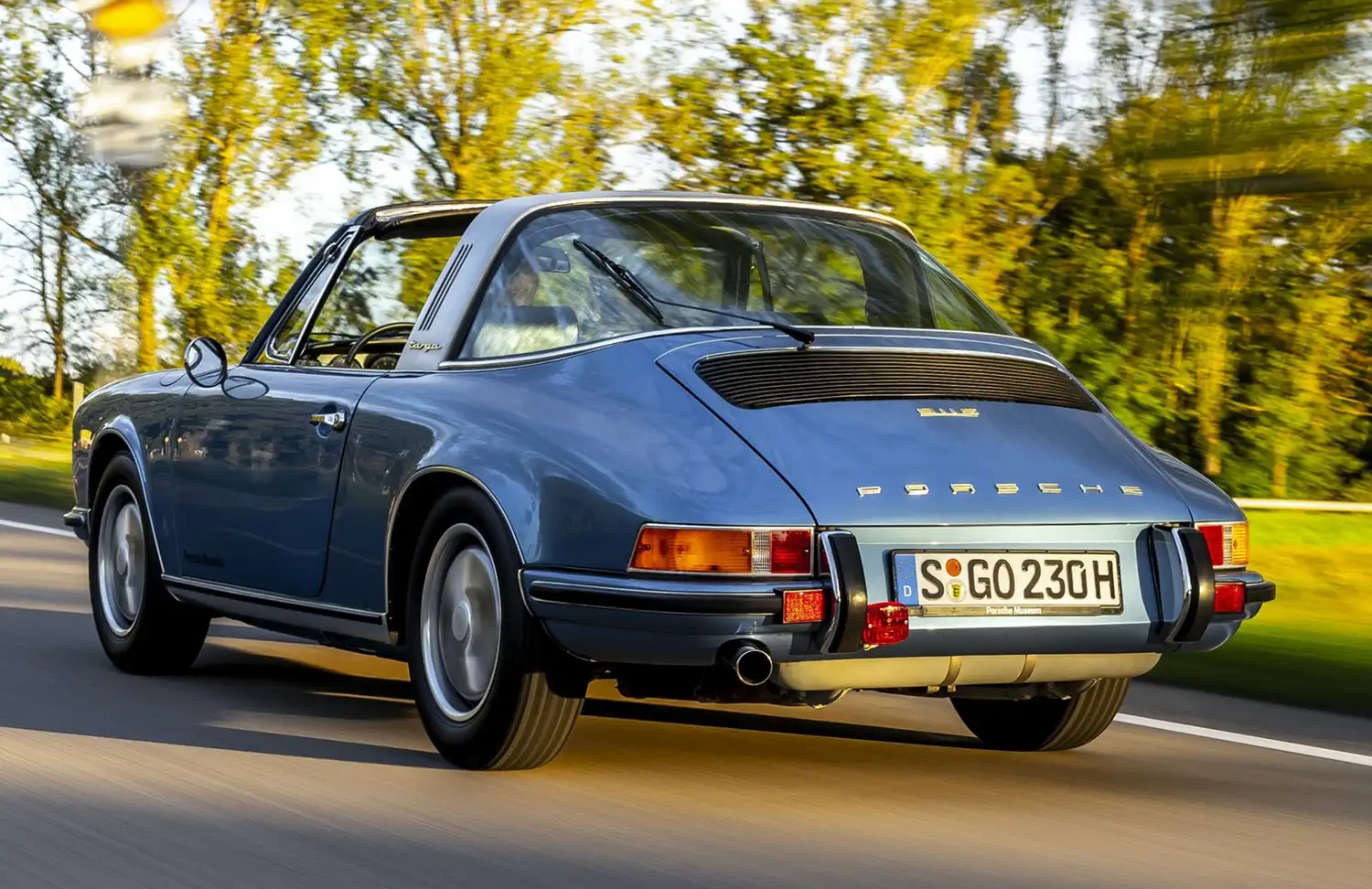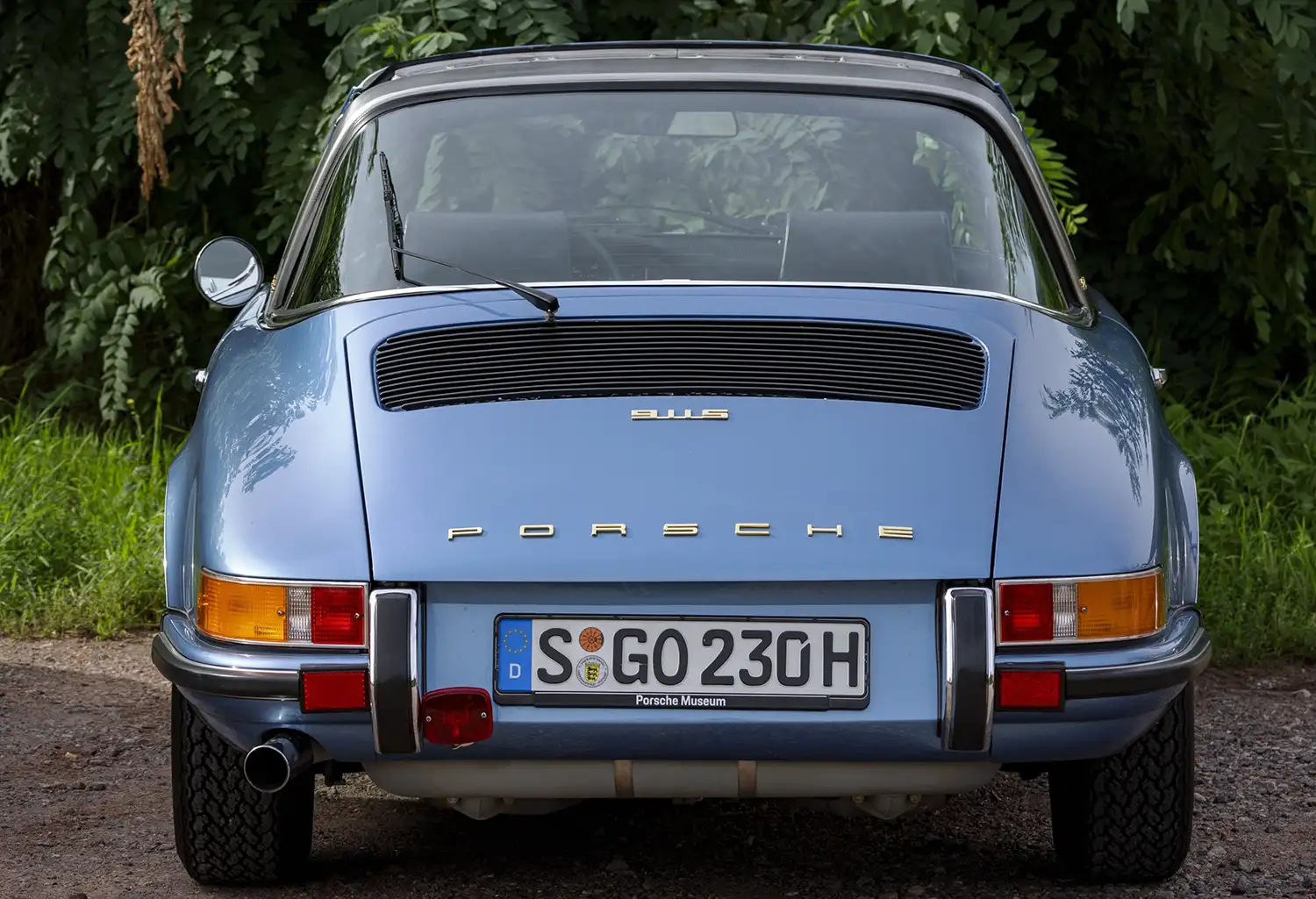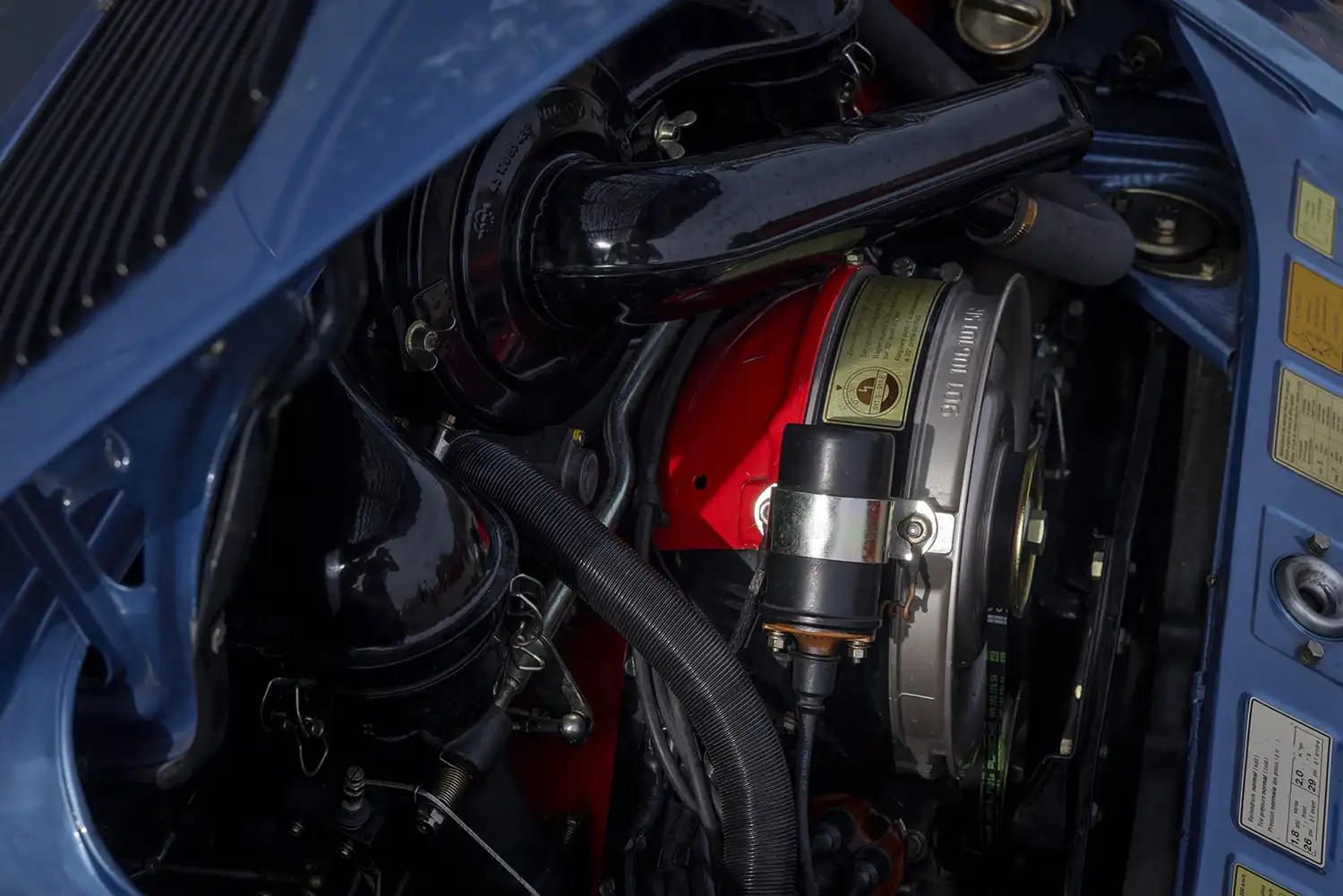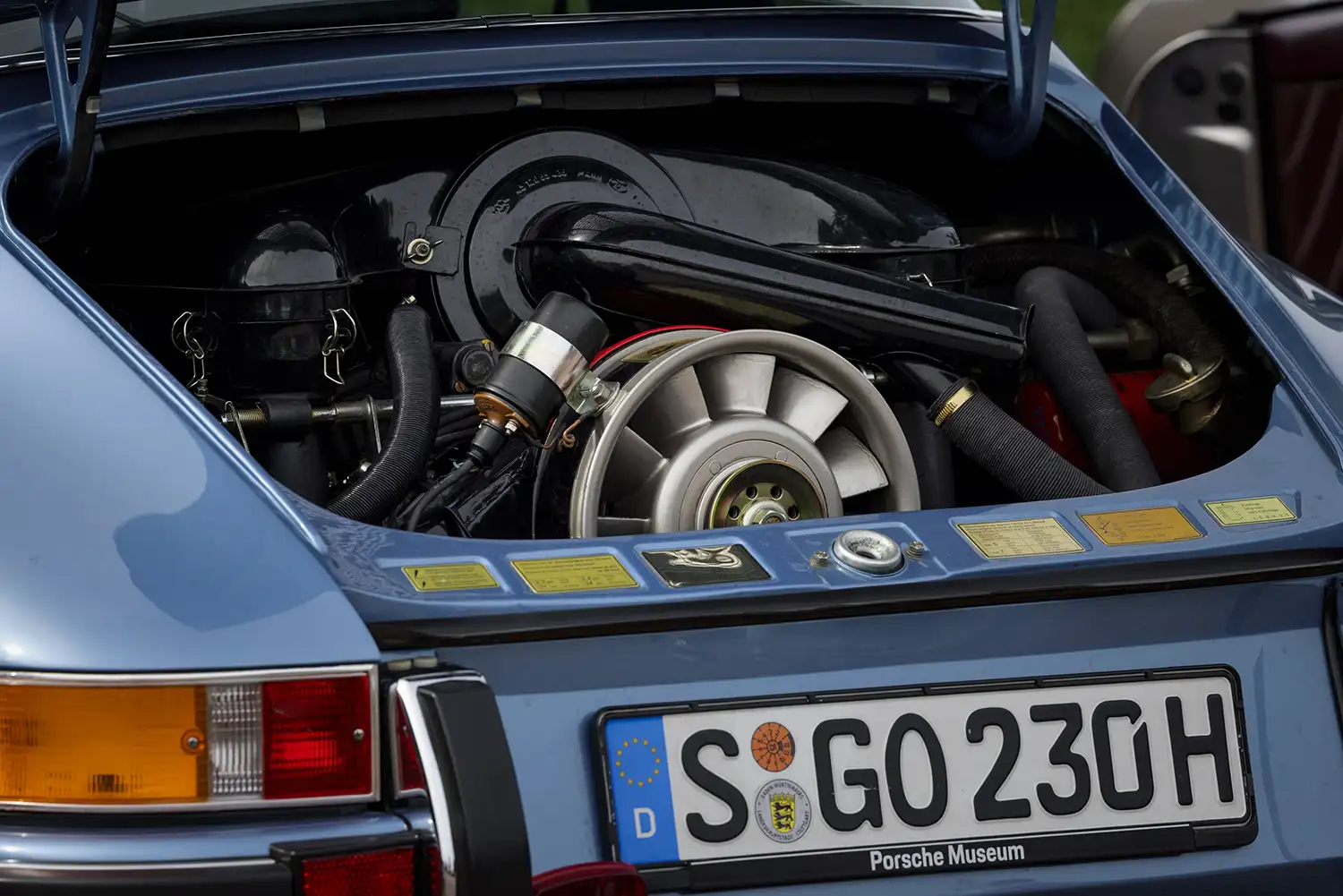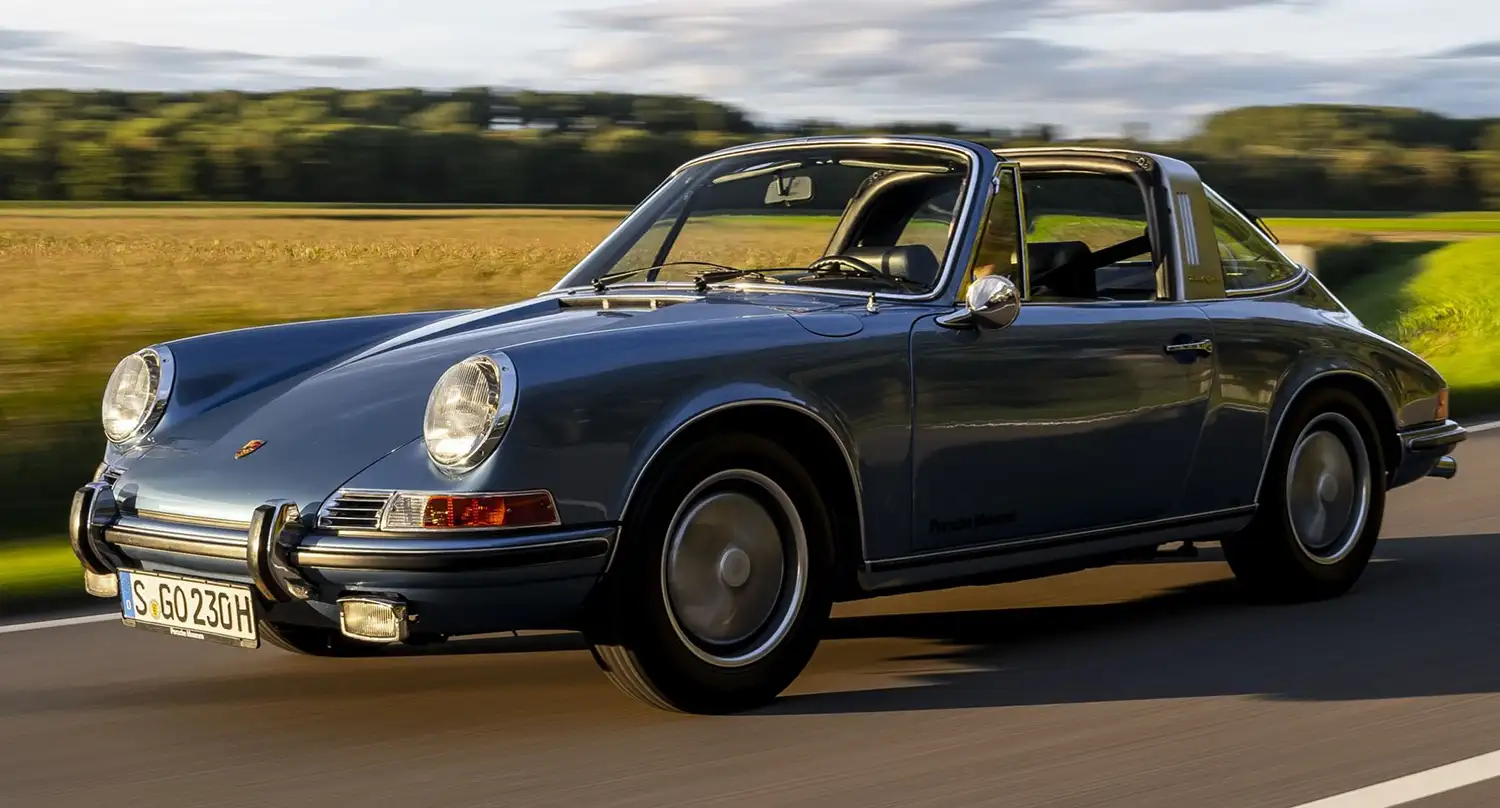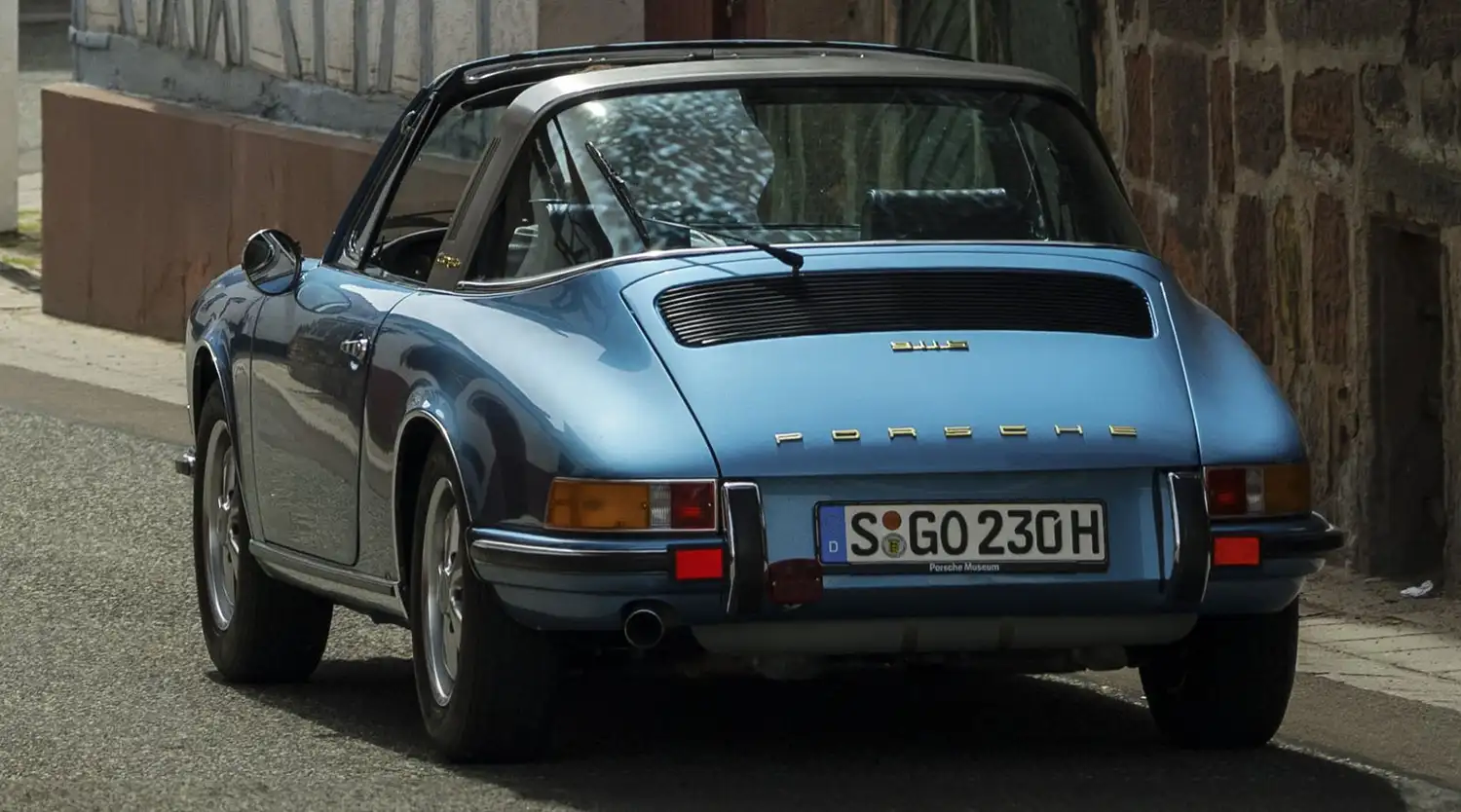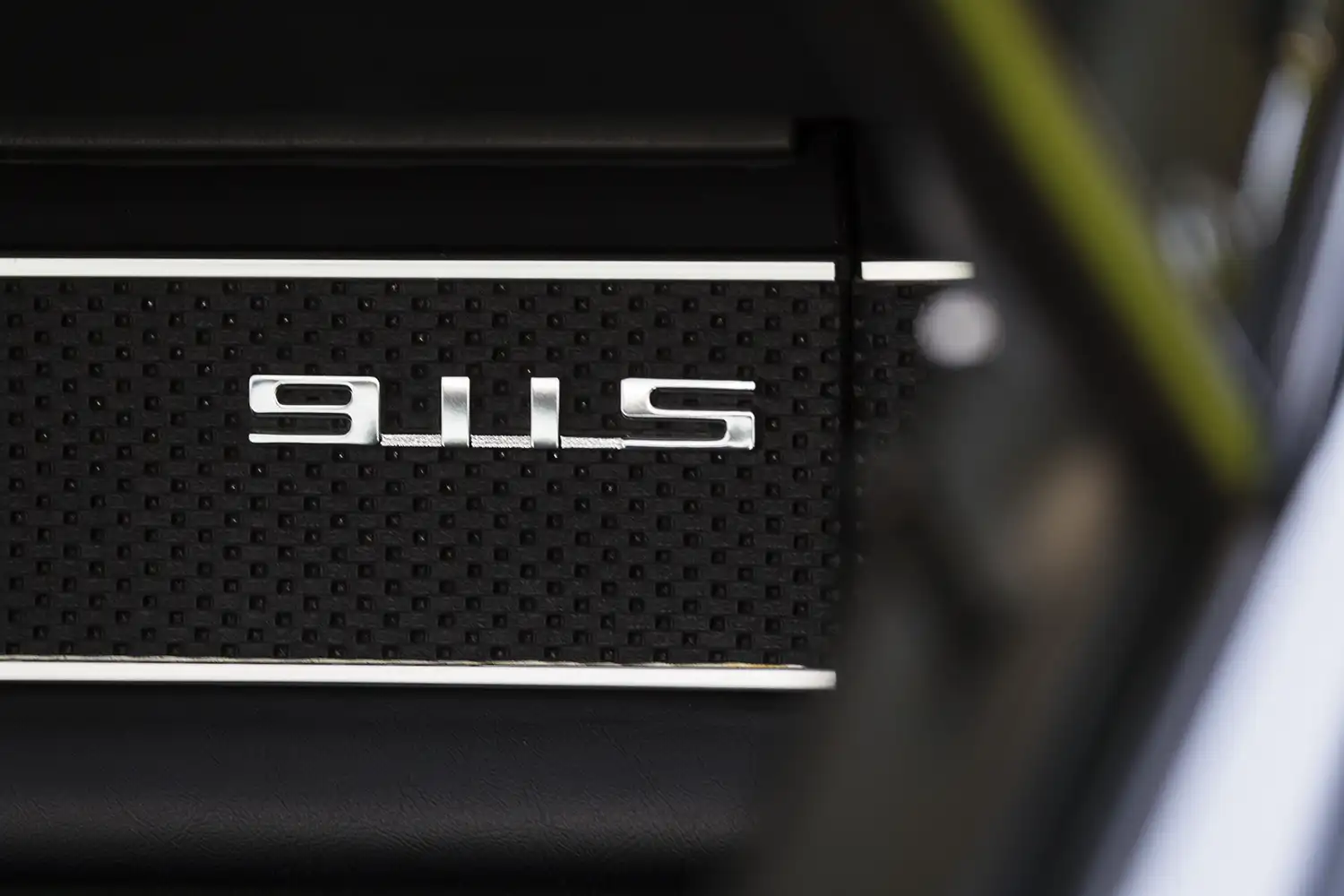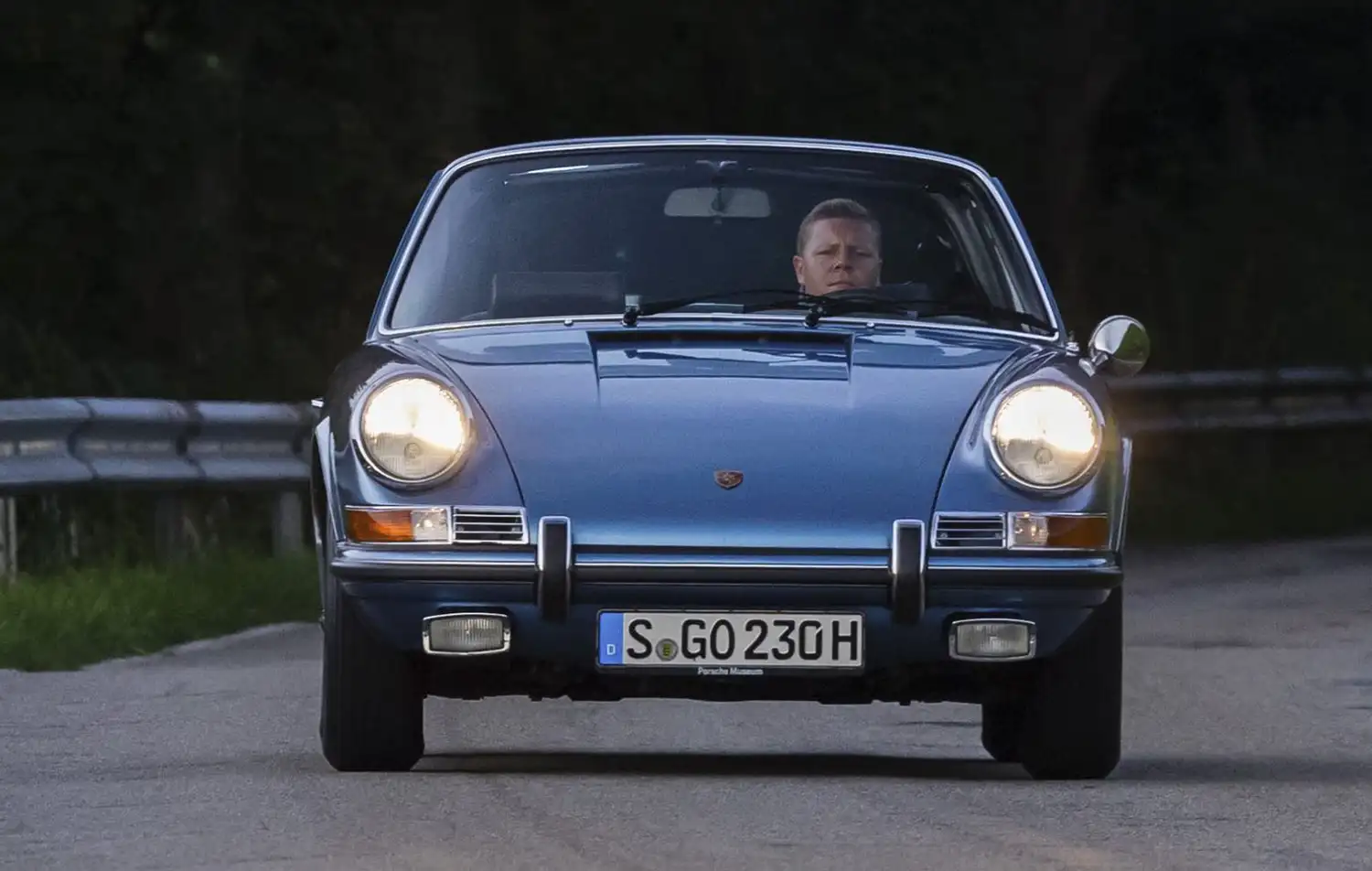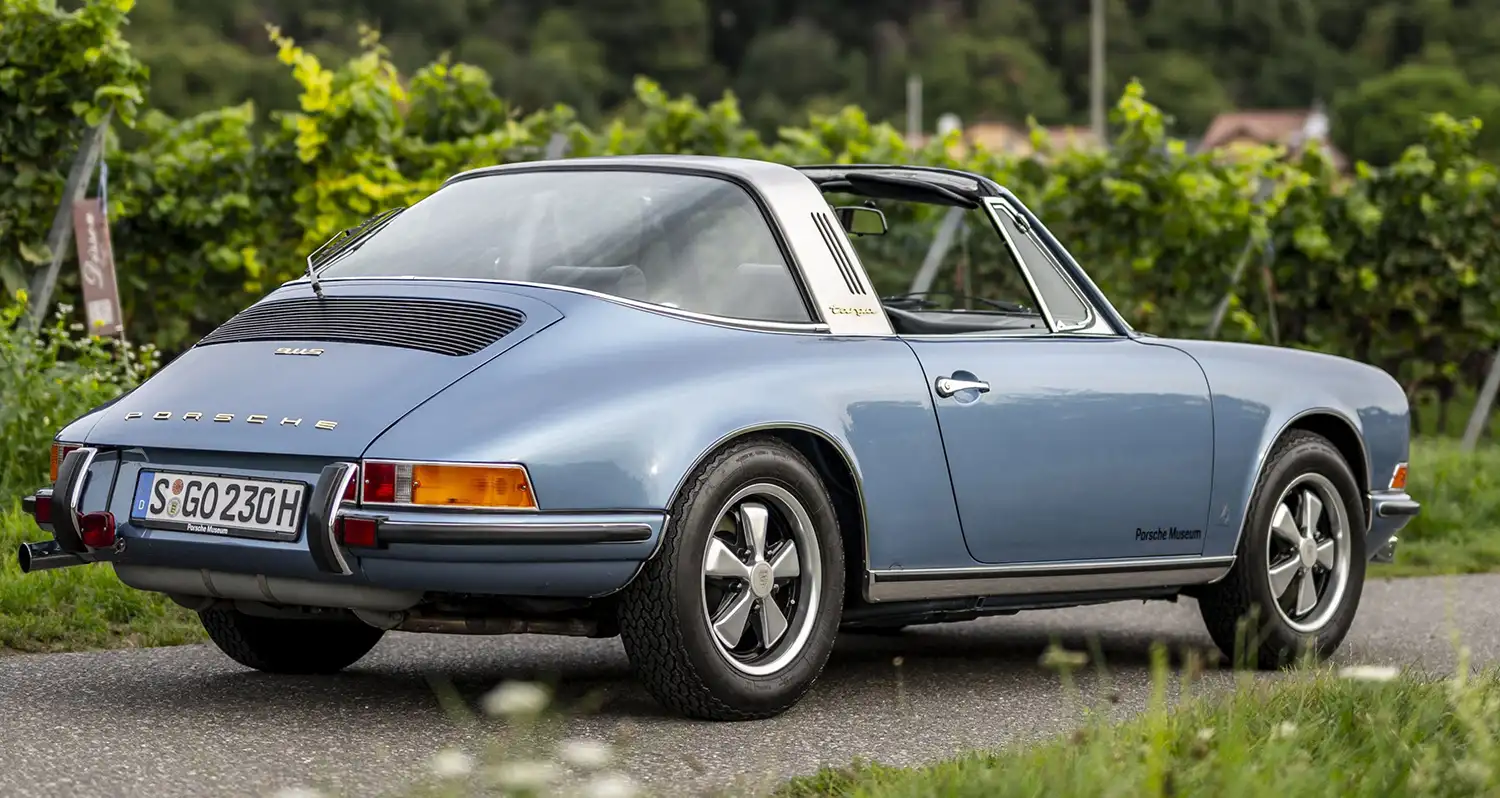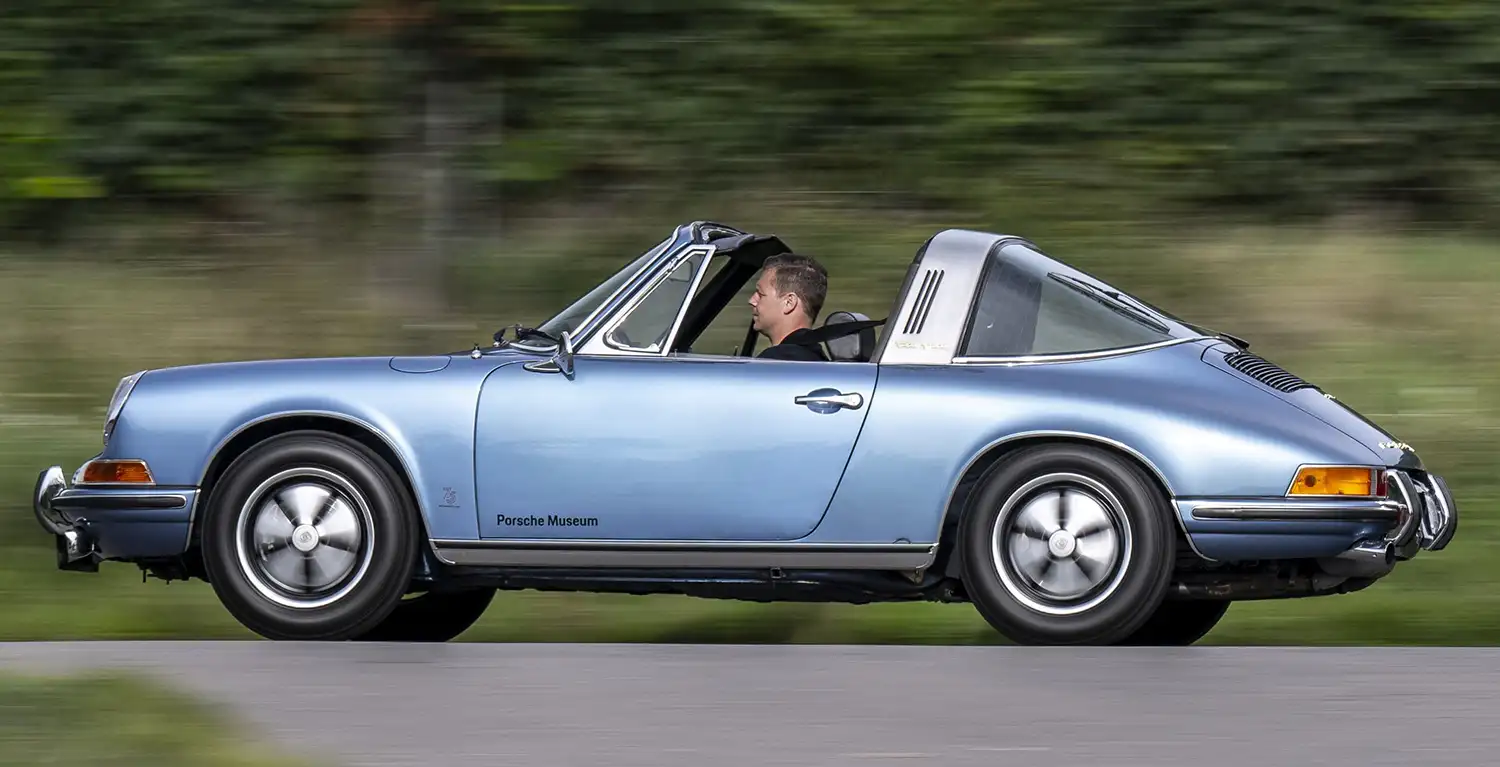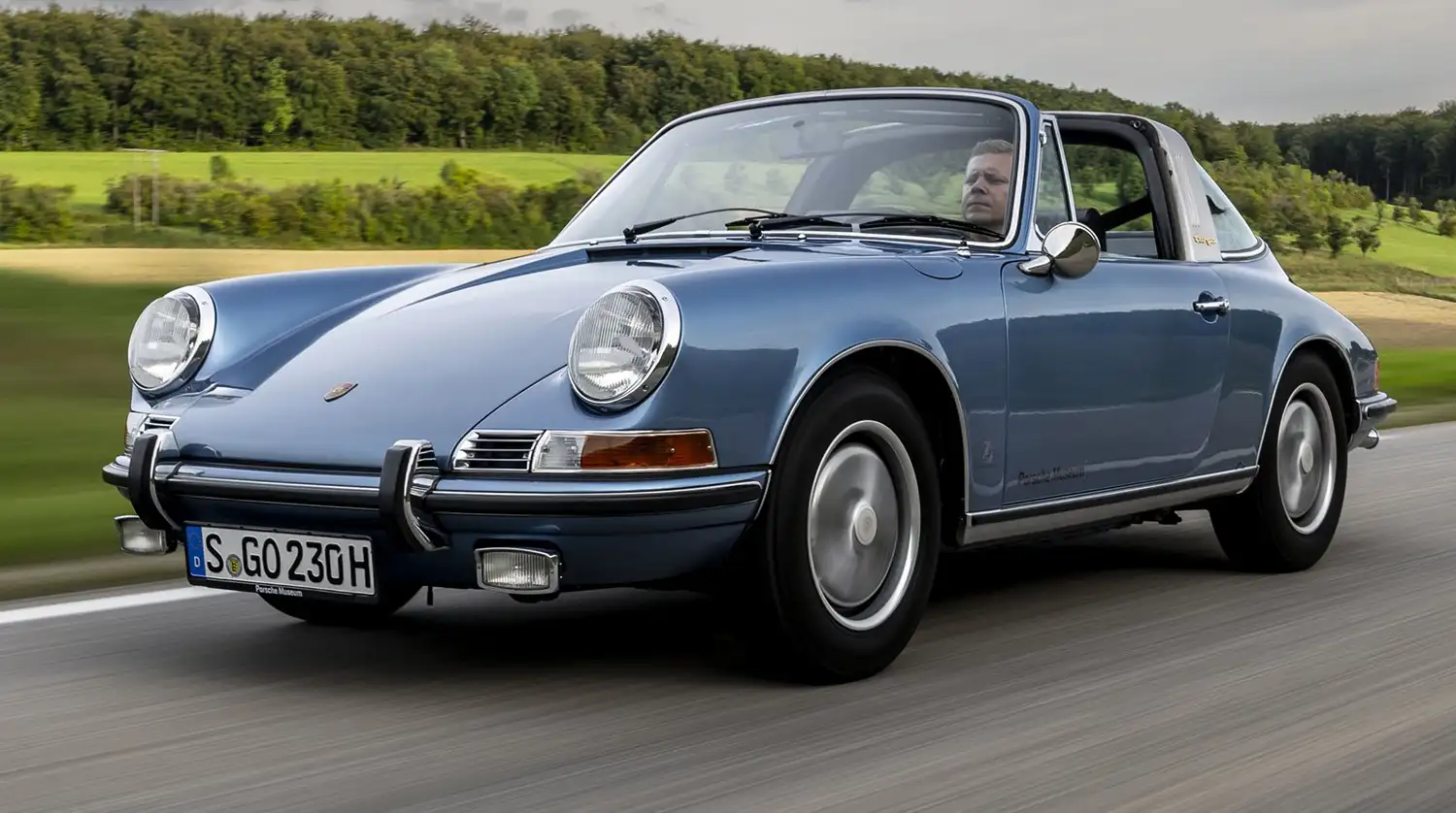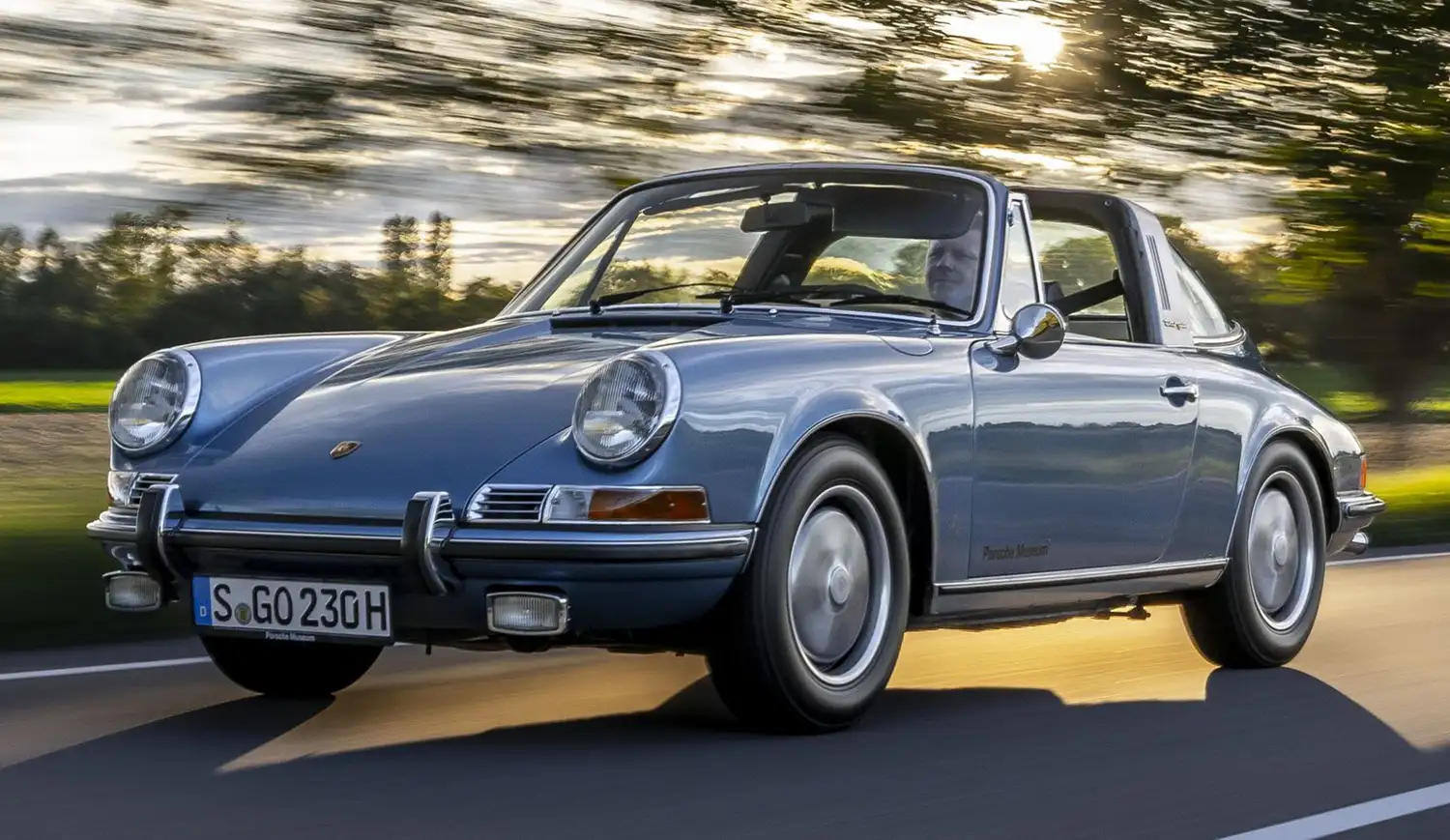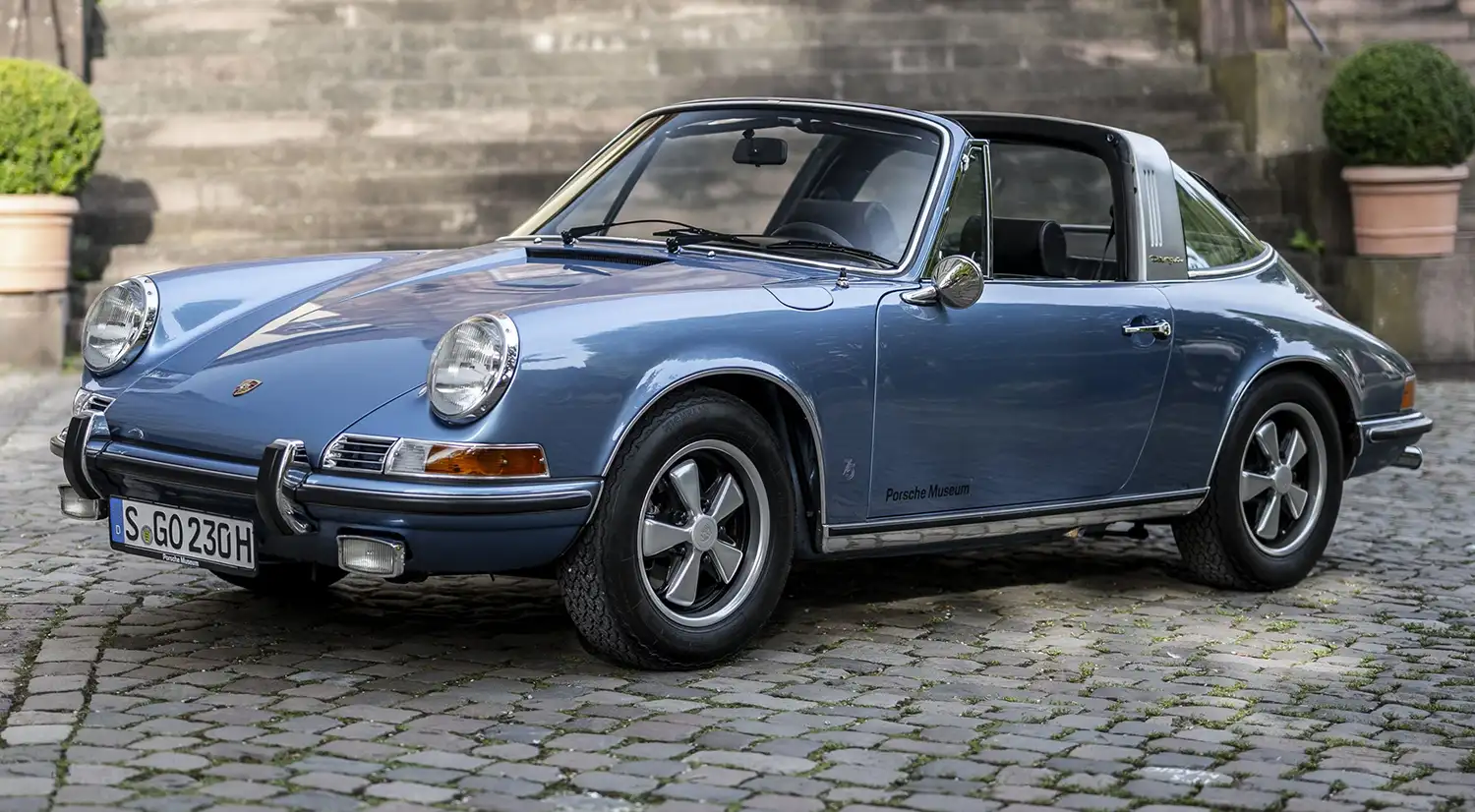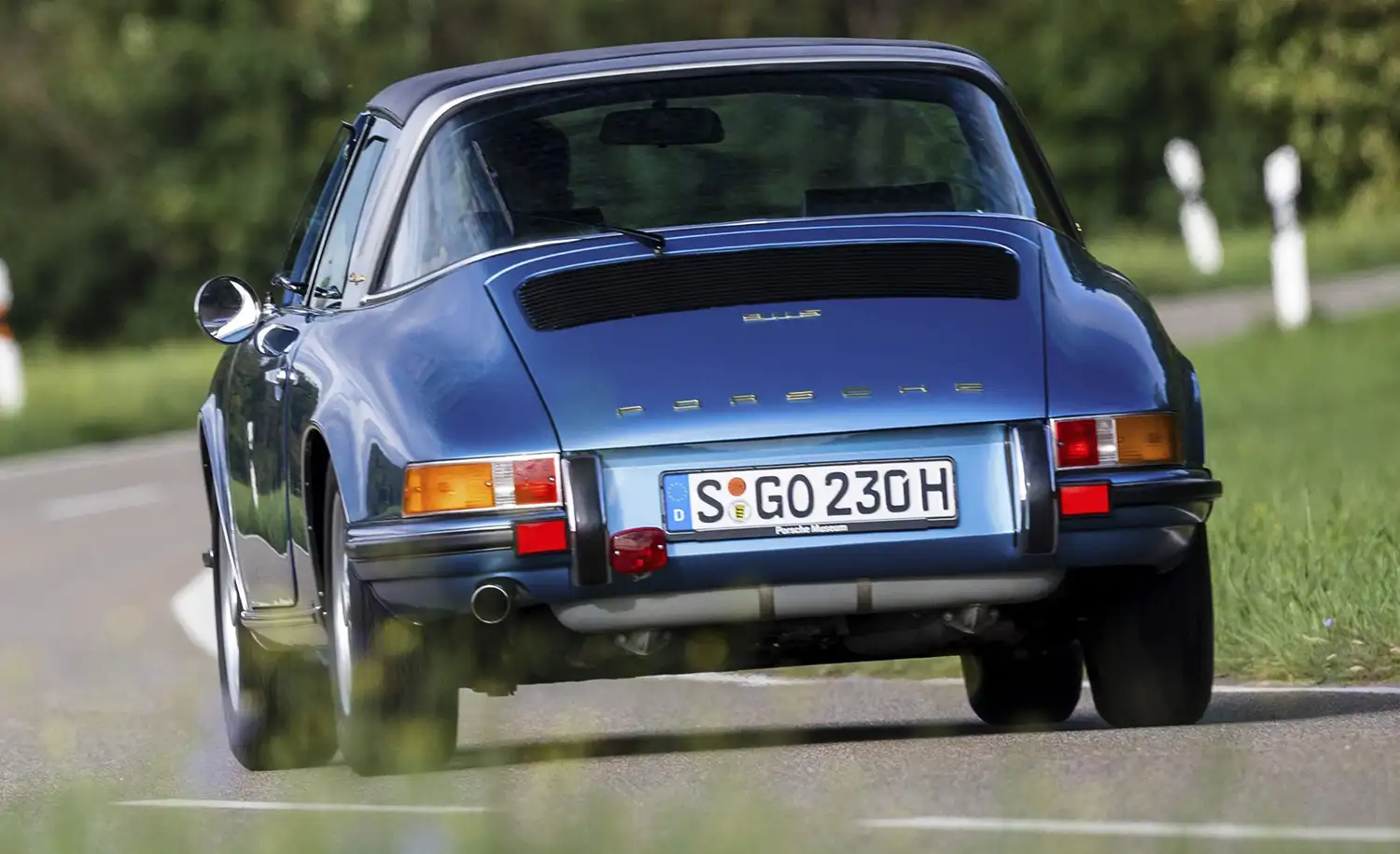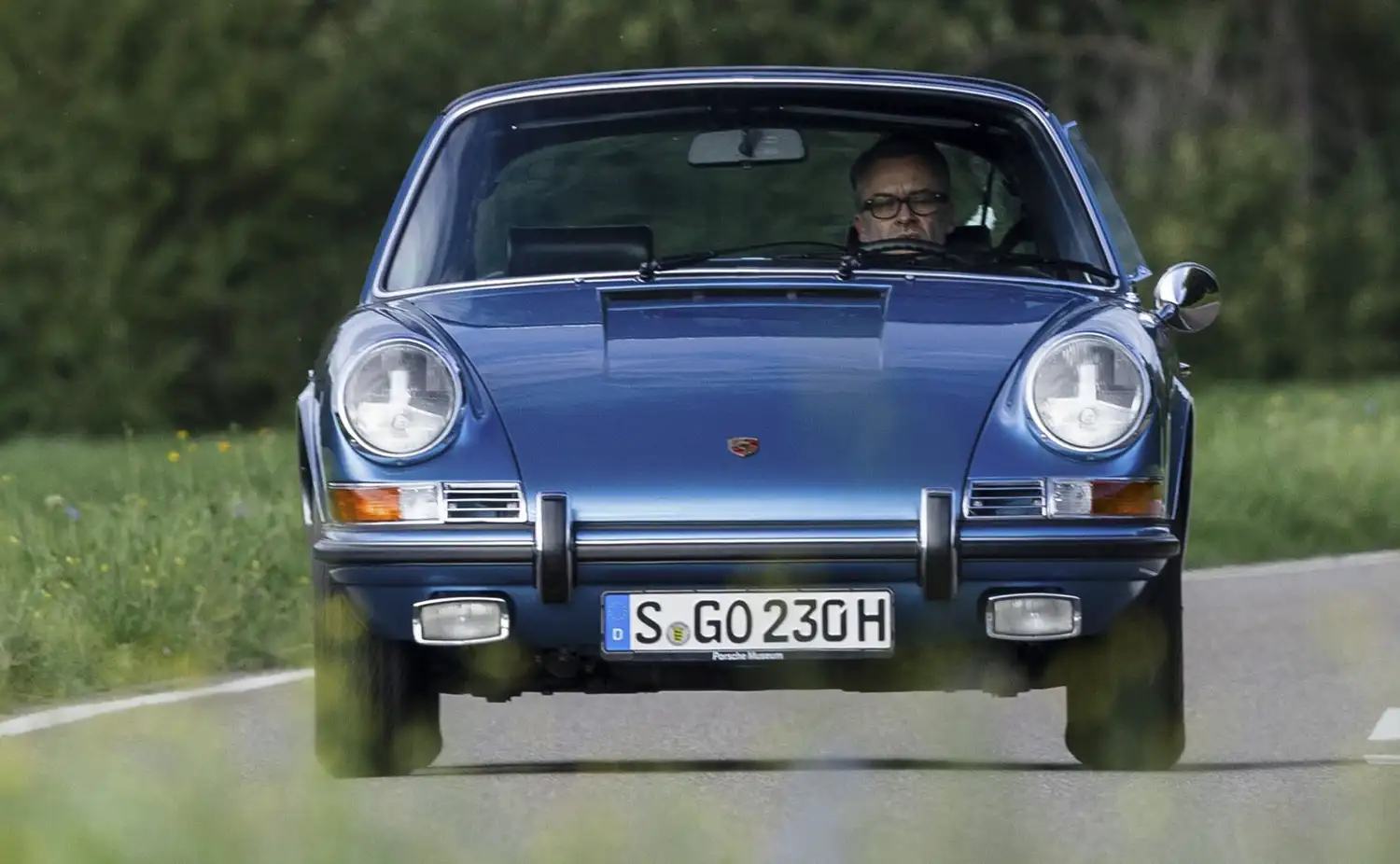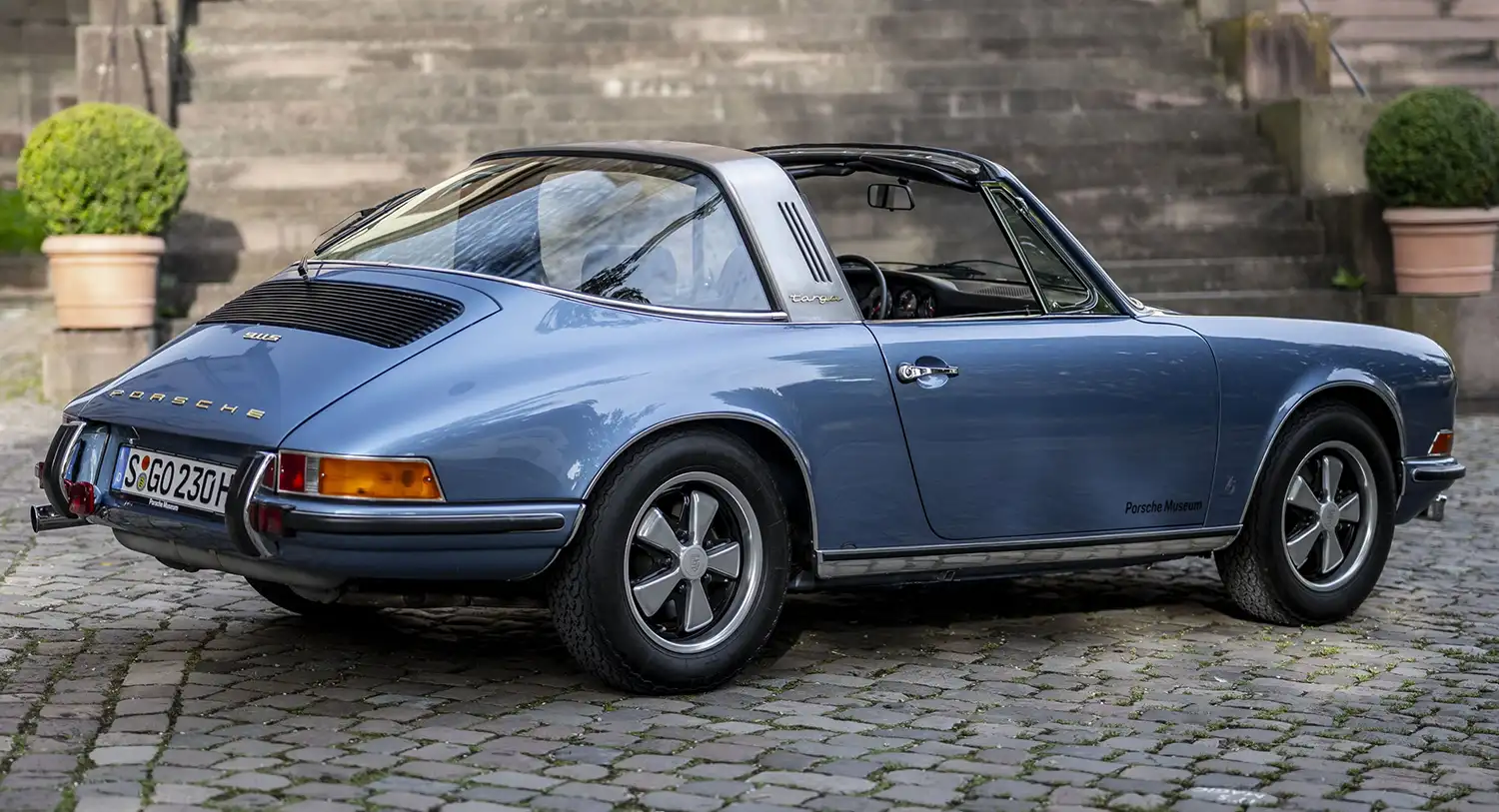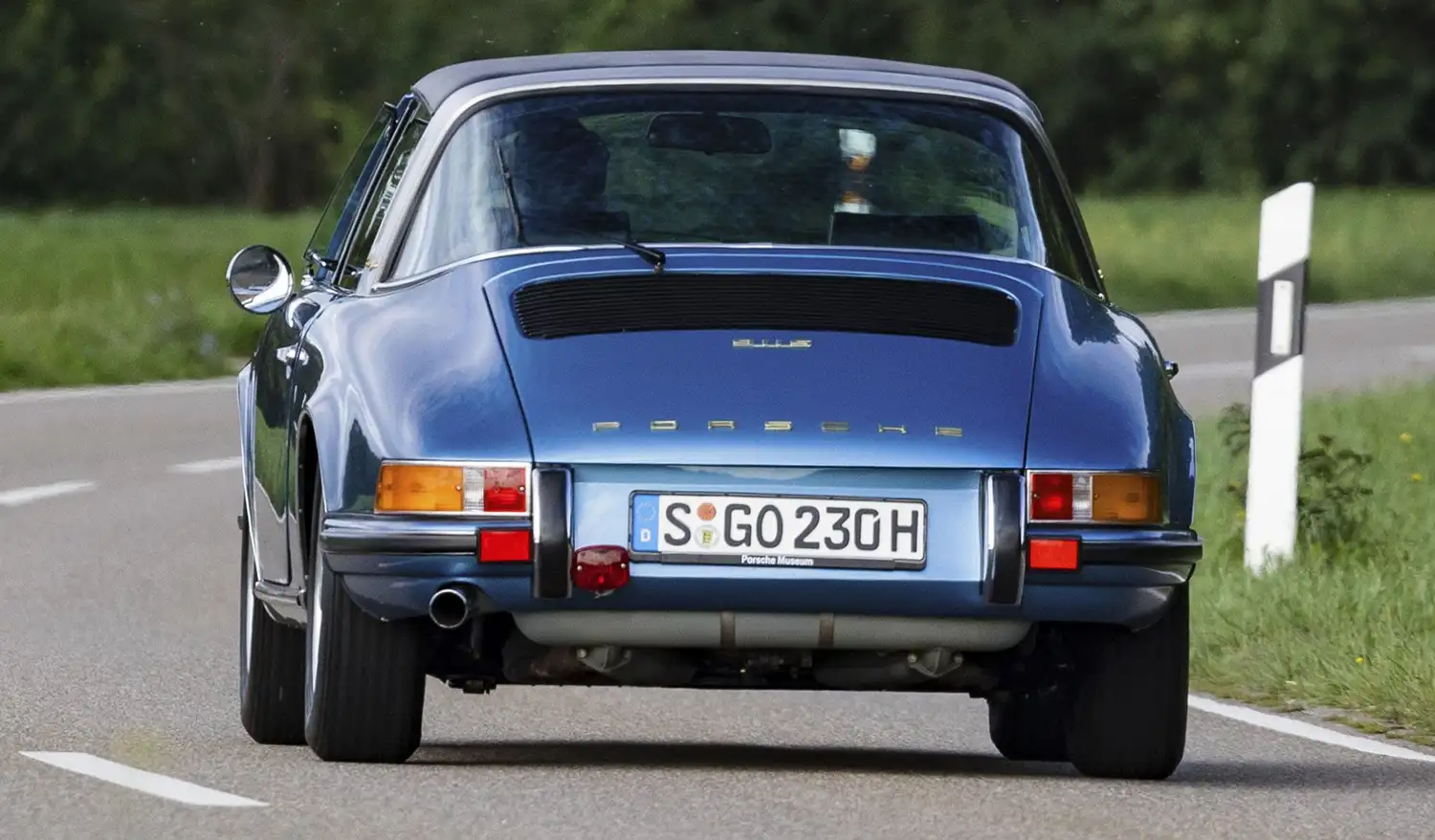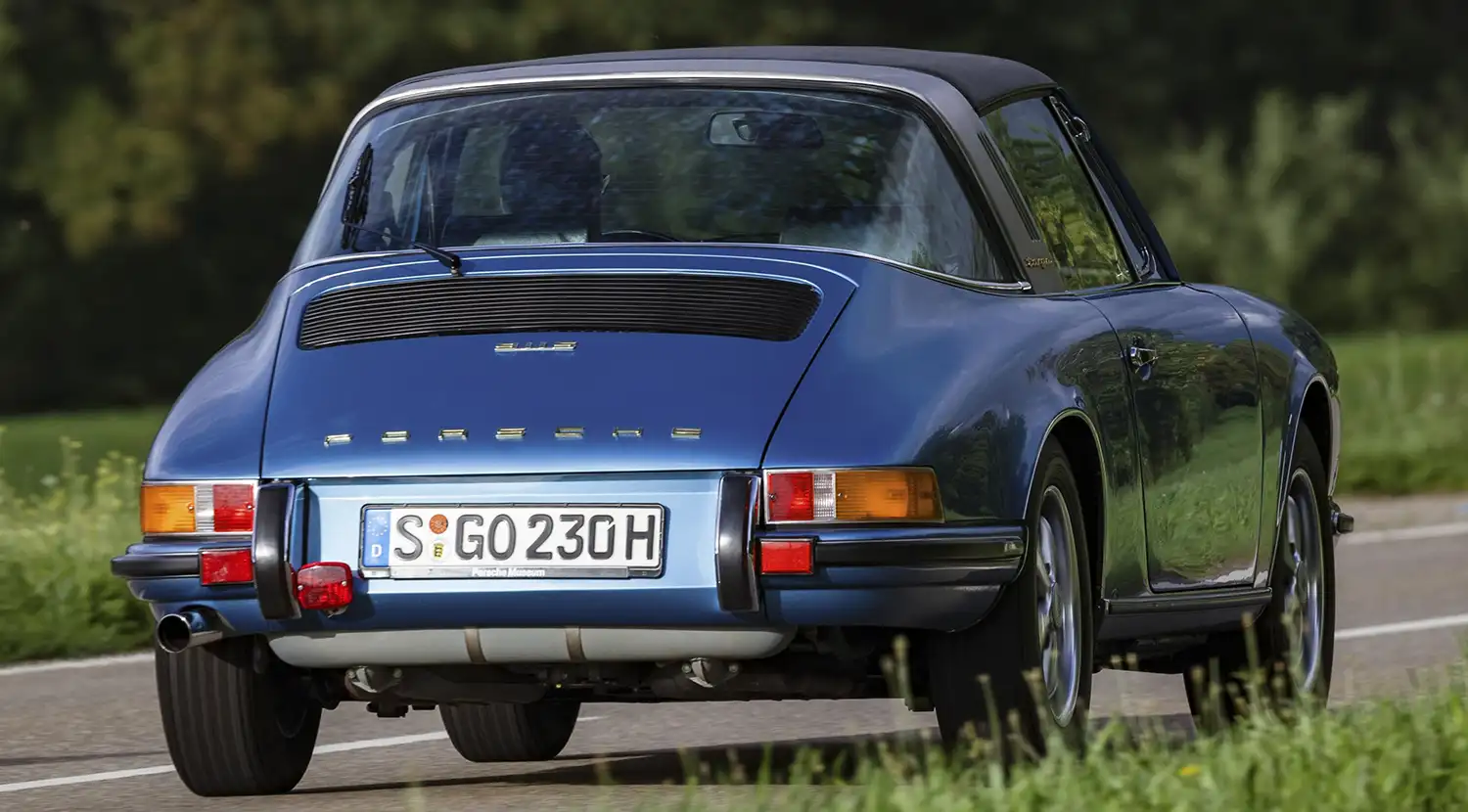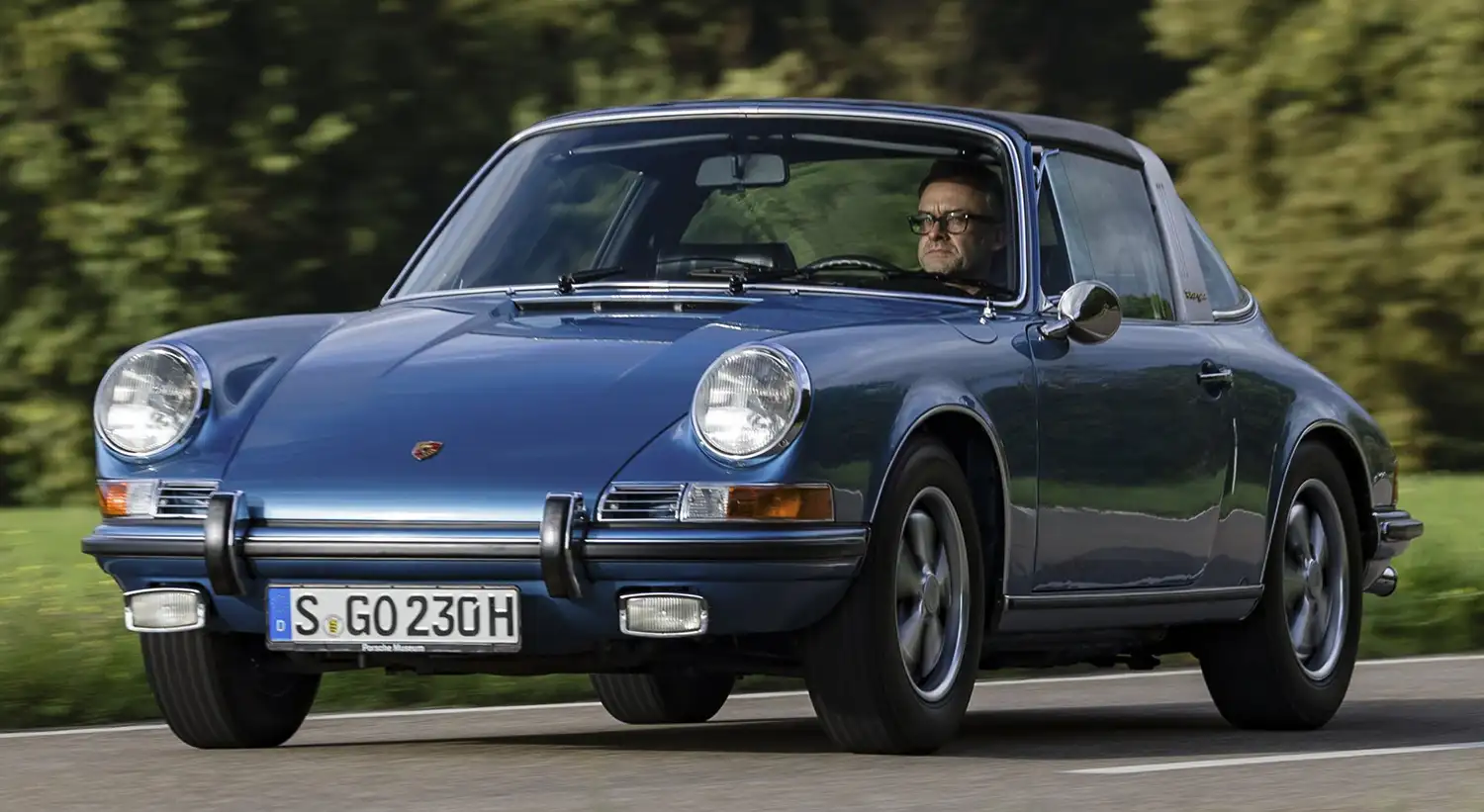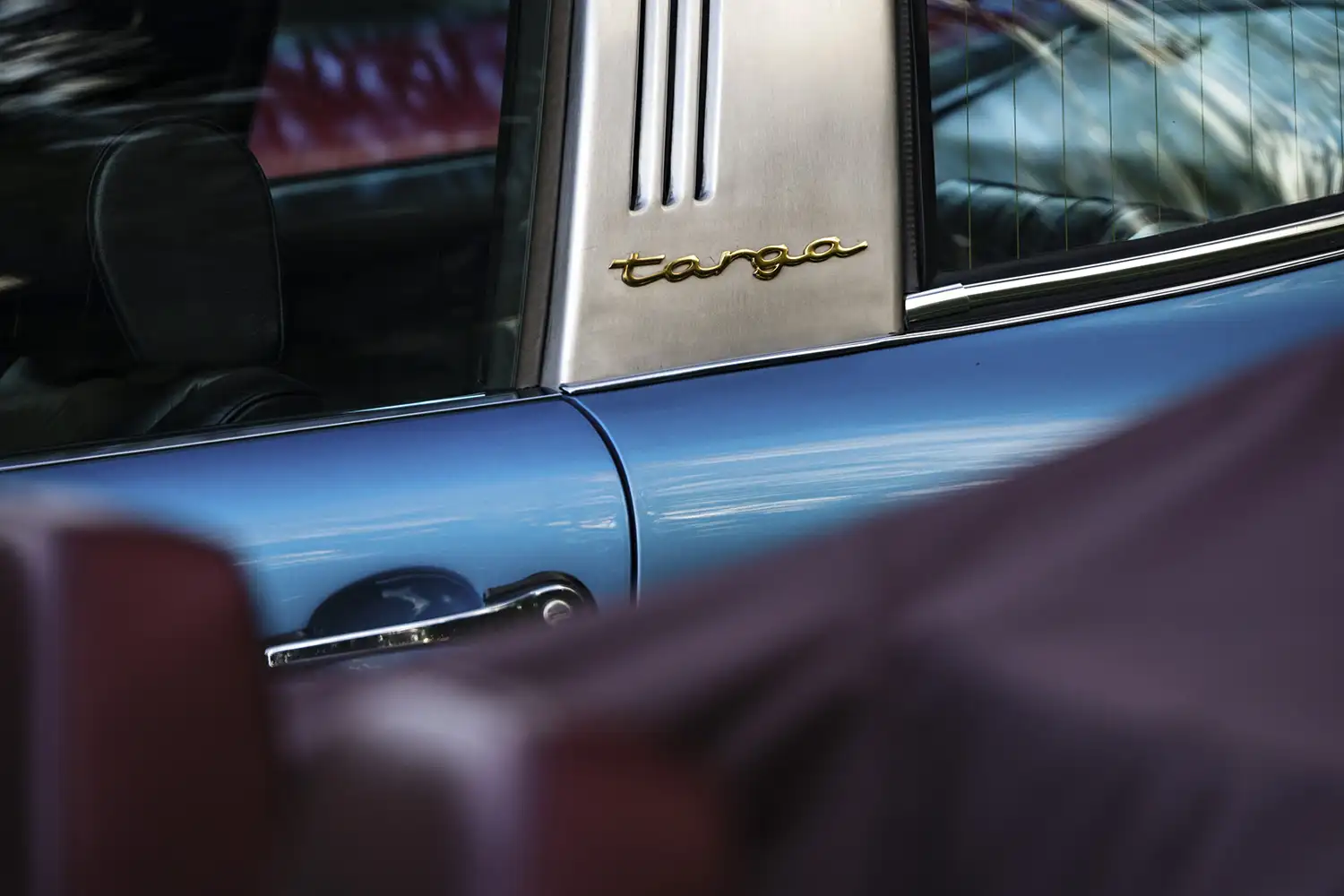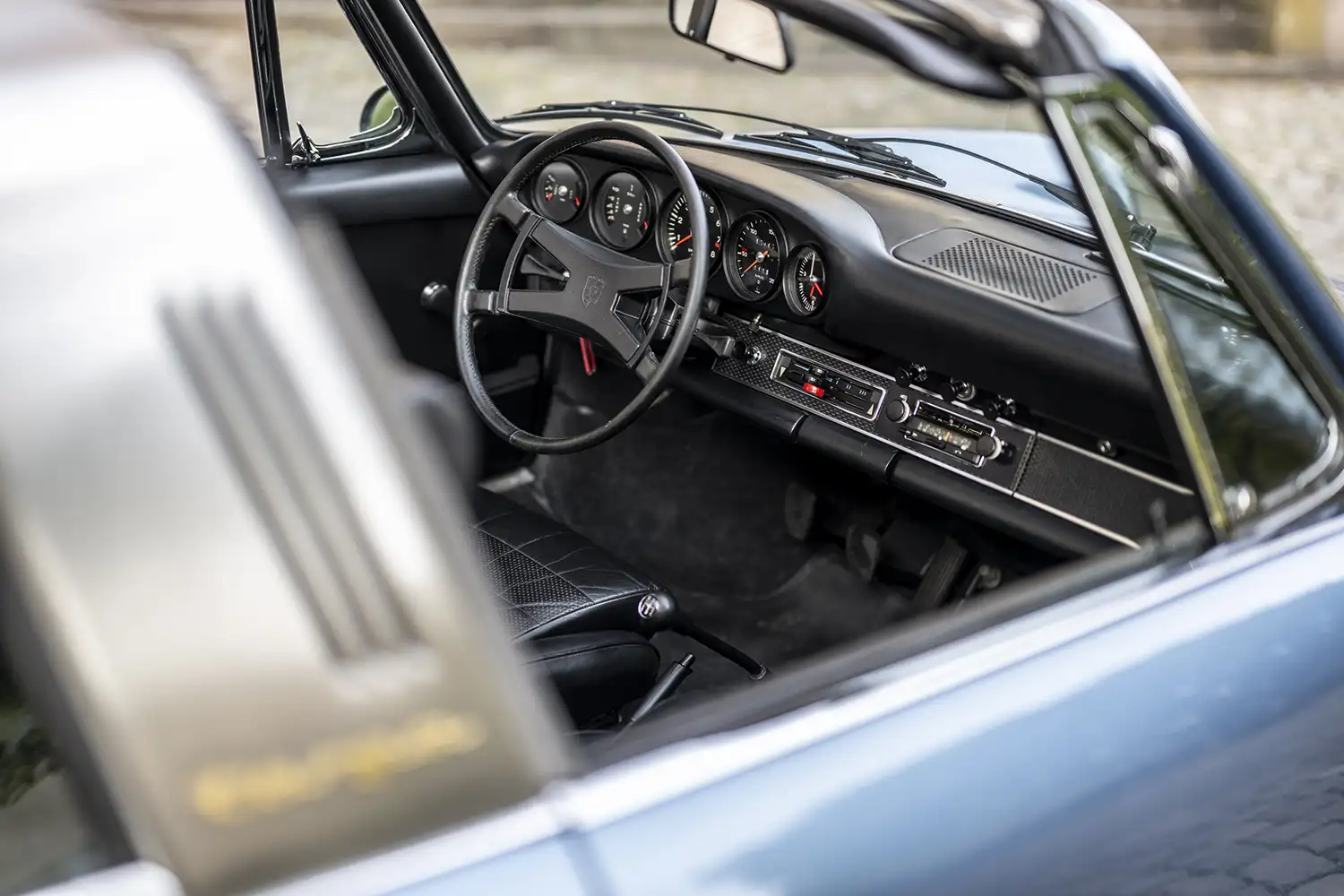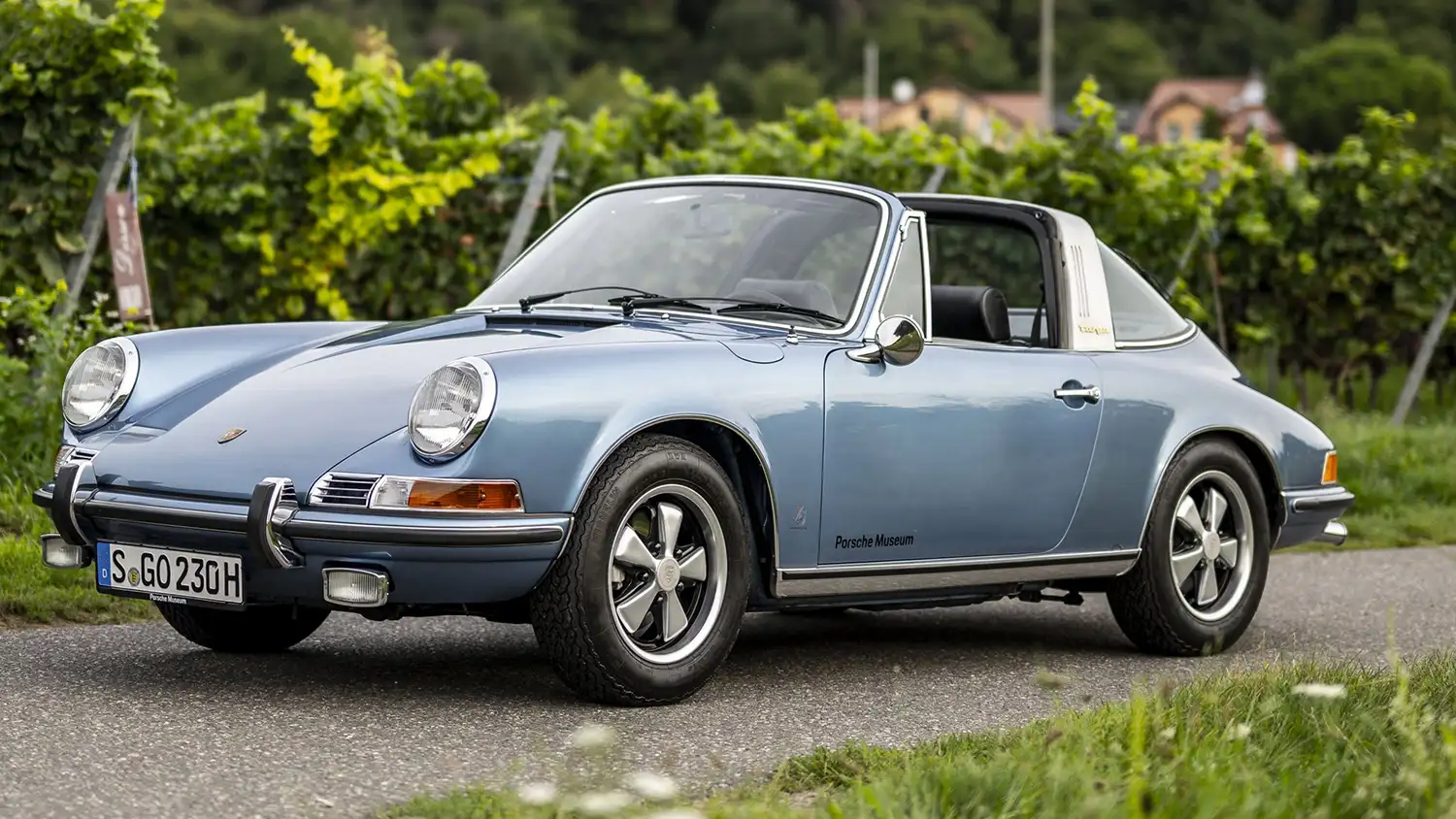
Every year has its unforgettable moments. Travel back to 1970 and you’ll find the Beatles splitting up, the band Queen just forming, and the Porsche 917 clinching overall victory at the 24 Hours of Le Mans. Amidst these historic events, one out of every three Porsche 911 models leaving the Zuffenhausen plant was a Targa.
Five years earlier, Porsche had introduced the first 911 Targa, a groundbreaking vehicle that defied conventional categories. It was neither a convertible nor a coupé, not a saloon nor equipped with a hardtop. Instead, the Targa was hailed as the world’s first ‘safety cabriolet.’
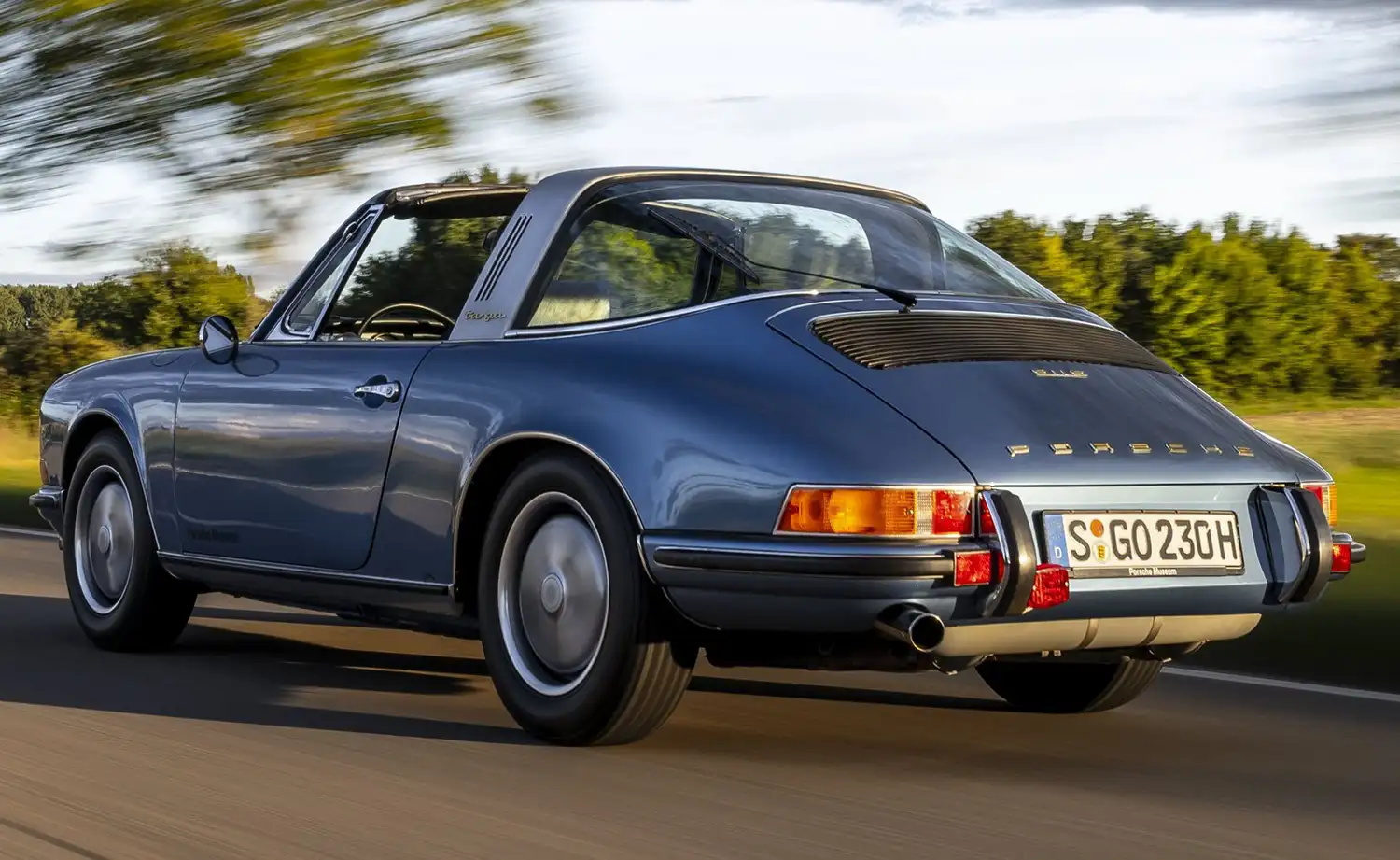
Porsche developed the Targa in response to stringent new safety regulations in the United States during the mid-1960s. It featured distinctive boxy bumpers with black ‘bellows’ on the sides, designed to absorb impacts up to 8 km/h without damaging the car’s bodywork. The standout feature of the Porsche 911 S 2.2 Targa was its rigid, removable folding roof, which paired with a robust steel rollover bar that quickly became a favorite among Porsche aficionados.
The 911 S 2.2 Targa was a marvel of engineering. Weighing in at 1,020 kg, it could achieve a top speed of 230 km/h. Its high-performance engine, delivering 132 kW (180 PS), was equipped with intake manifold injection and forged pistons. The S model also boasted a rear anti-roll bar and internally ventilated brake discs, ensuring superior handling and braking performance.
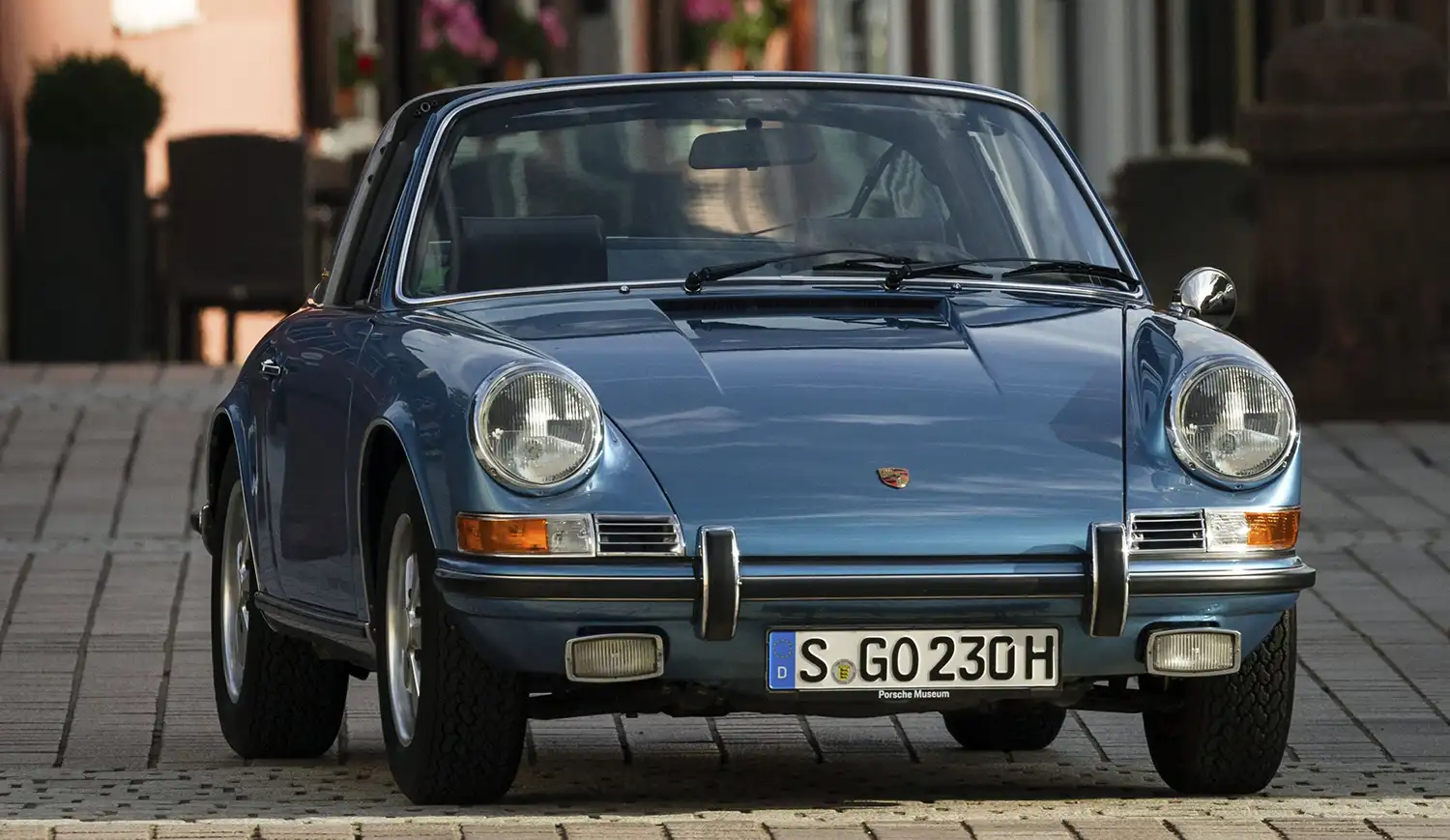
Almost 60 years ago, the debut of the Targa ushered in not only a new vehicle concept but also a unique Porsche driving experience. The legacy of the 911 S 2.2 Targa lives on, celebrated for its innovative design and enduring appeal.
- Engine Power: 132 kW (180 PS)
- Top Speed: 230 km/h
- Engine Type: Flat-six
- Fuel System: Intake manifold injection
- Pistons: Forged pistons
- Weight: 1,020 kg
- Brakes: Internally ventilated brake discs
- Additional Features: Rear anti-roll bar
Source: Porsche
This Article use tools from Chatgpt
